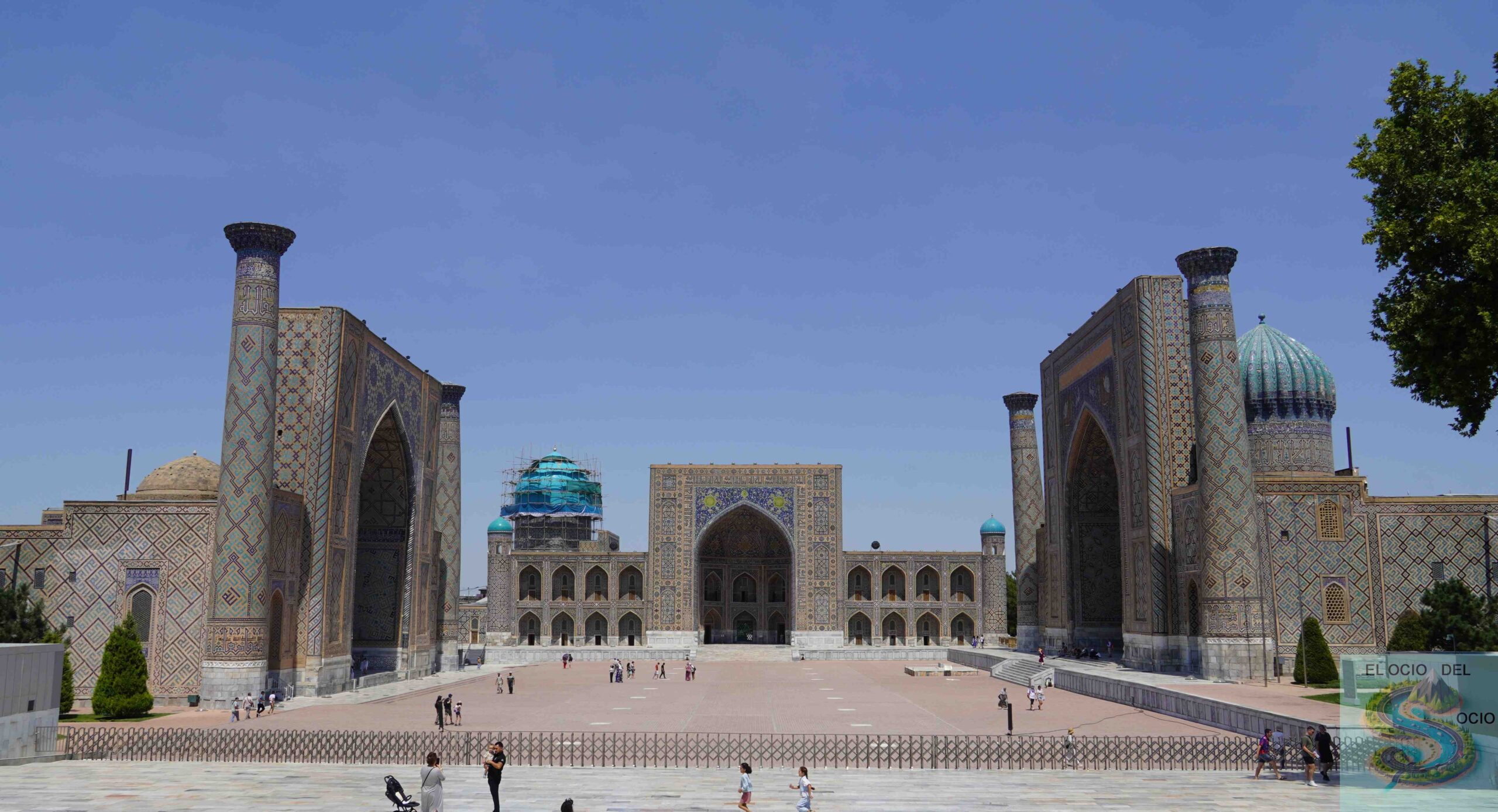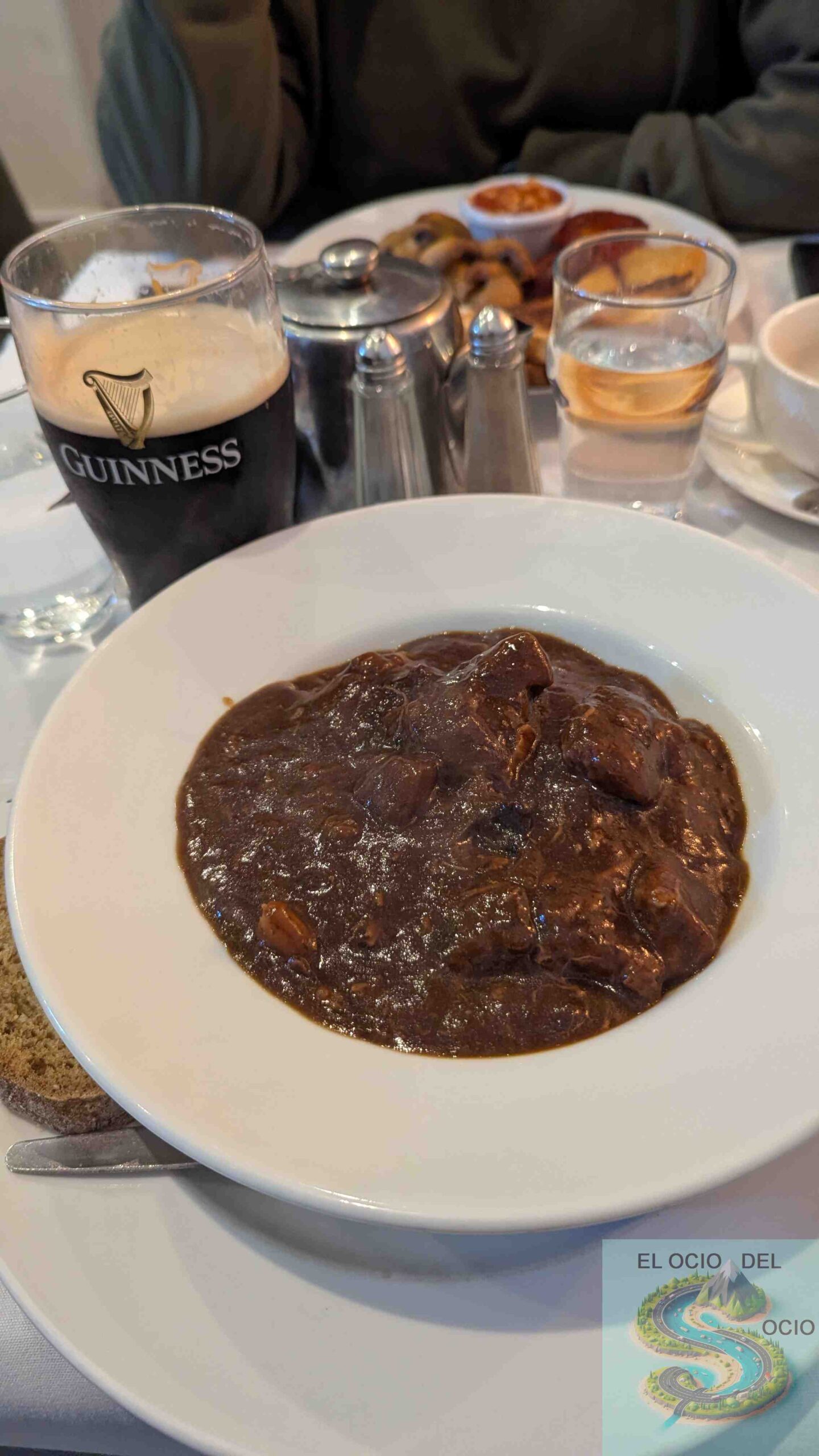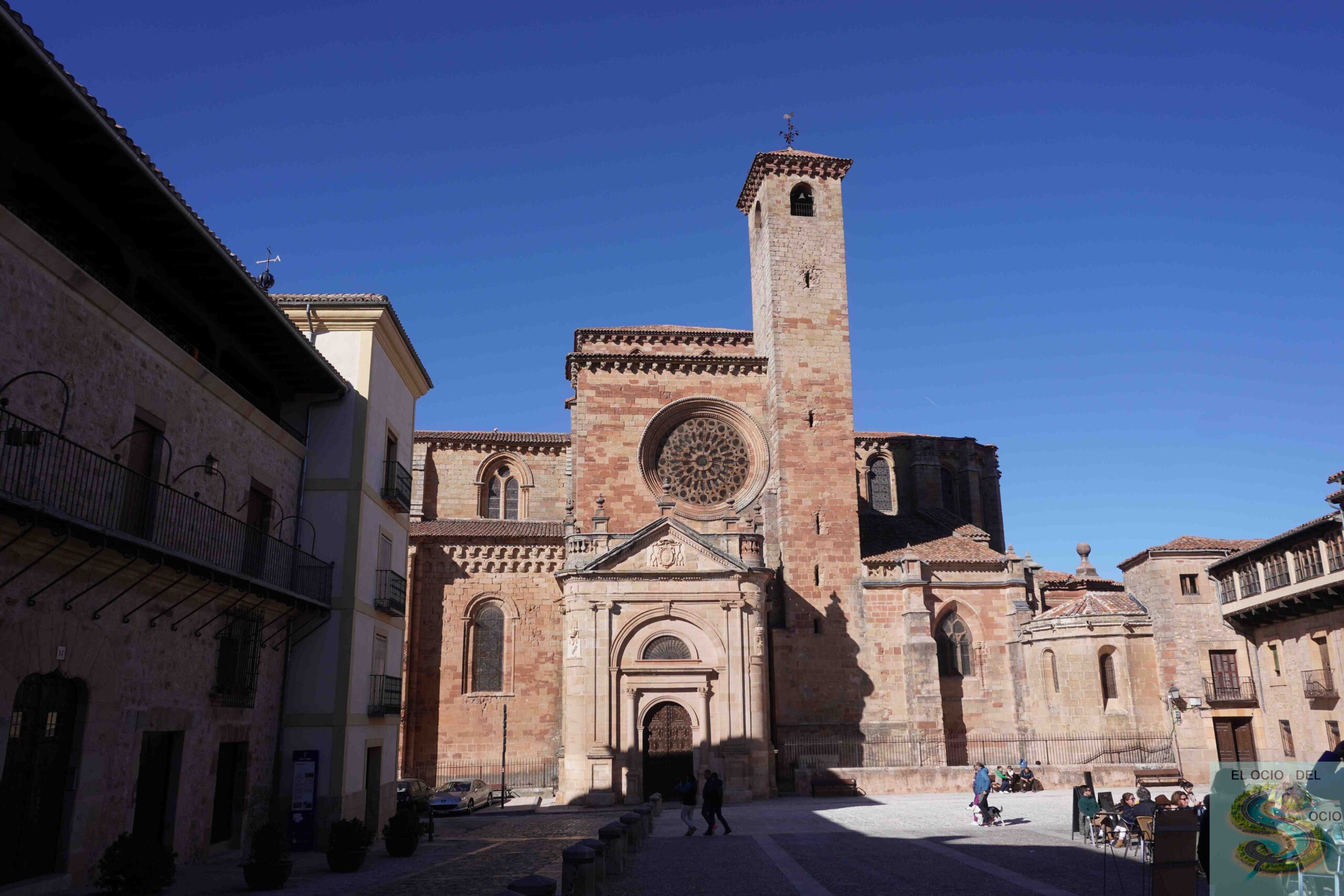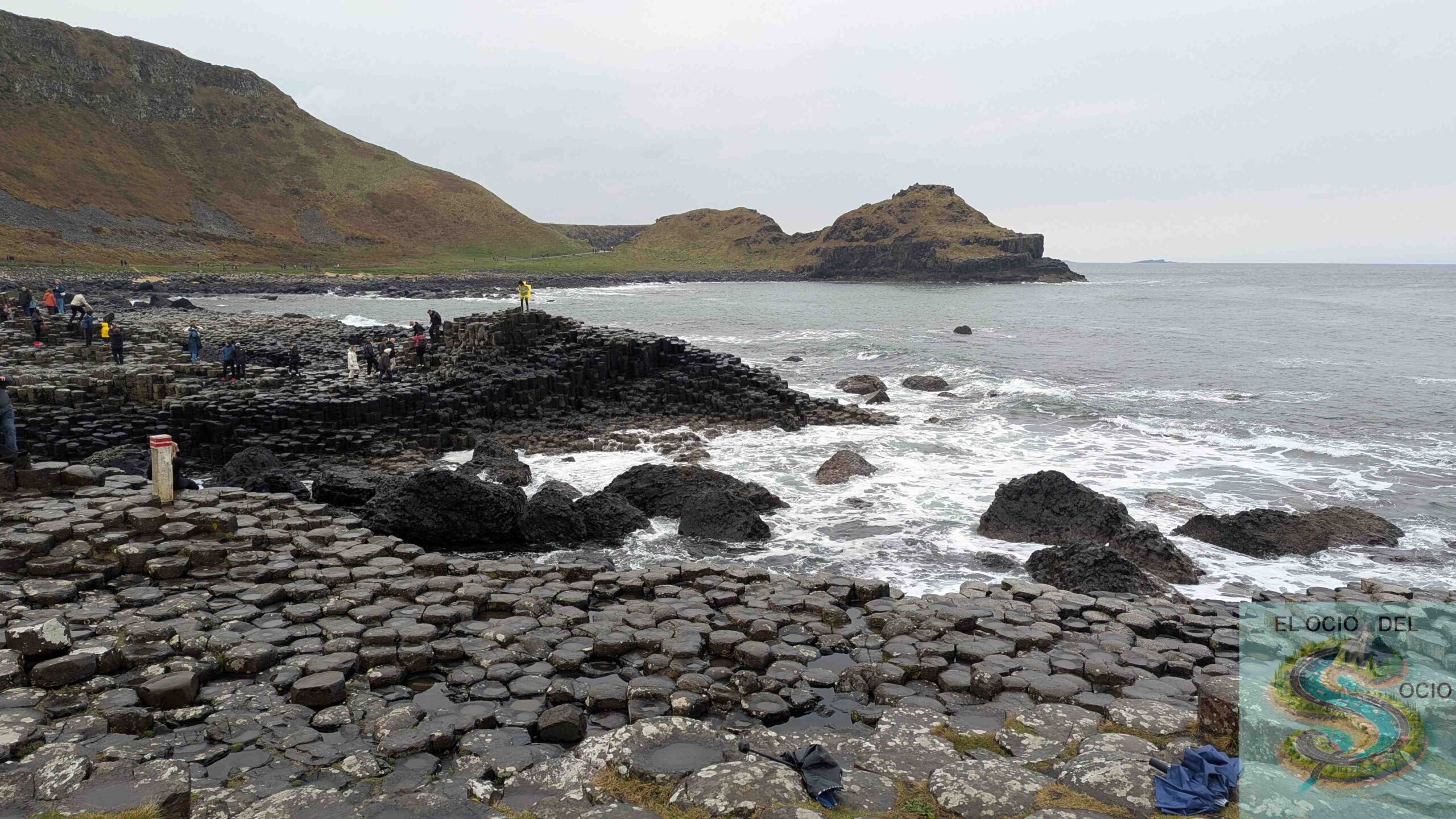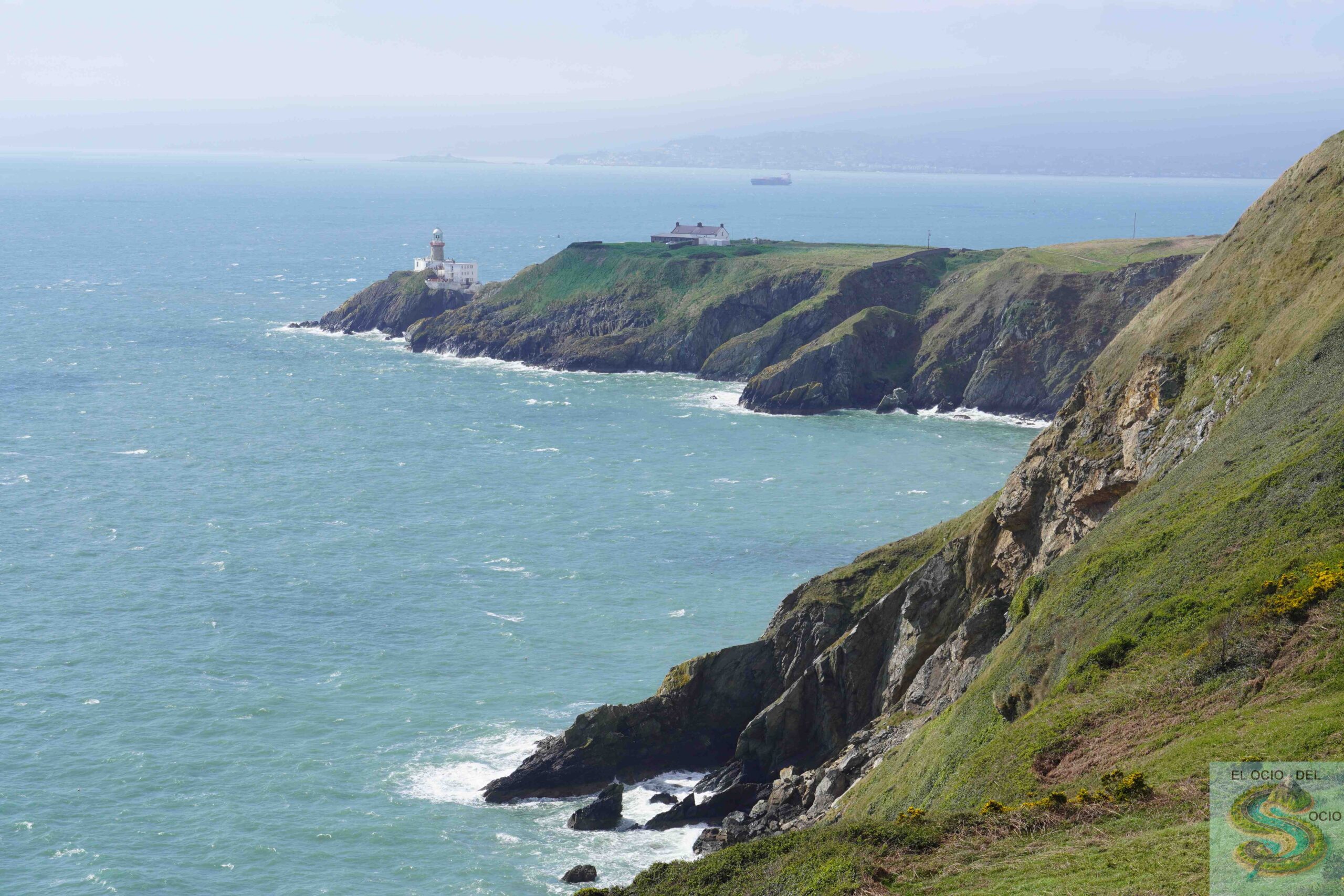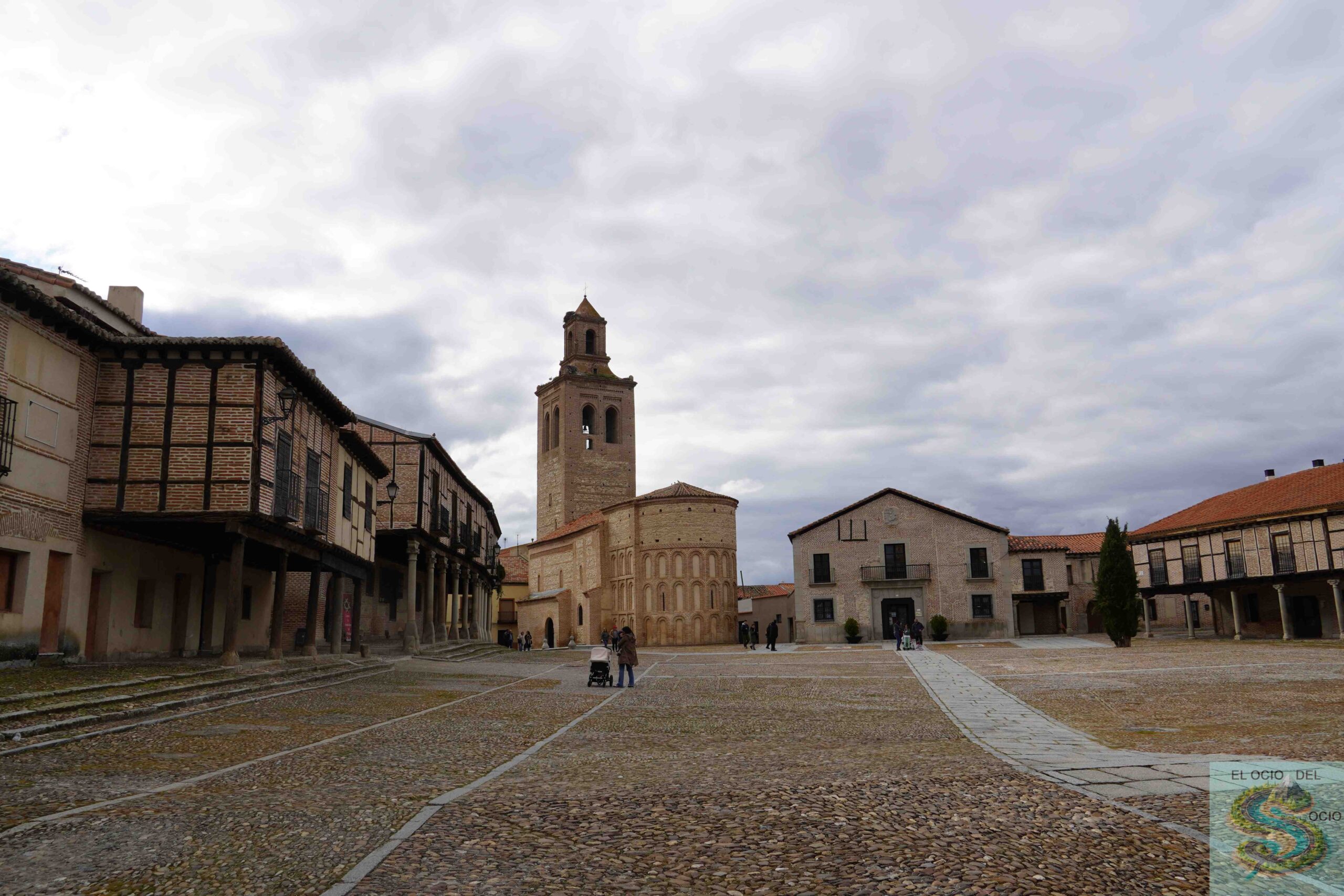Discover the needs of the city that overflows mudéjar art par excellence and of the most famous lovers
What to see
- Aqueduct of the Arches
- Cathedral of Santa María de Mediavilla de Teruel
- Plaza del Torico
- Church of San Pedro
- Mausoleum of the Lovers of Teruel
- The Mudejar Tower of El Salvador
- Tower of San Martín
- Escalinata del Ovalo
- Hostal Alcazaba
Below in the publication, as always, you have available a map of Google Maps with all the recommended points. The important points are close so with one day you could all see.
Description
Teruel is a city that exceeded my expectations. Maybe it was because I didn’t have them high, but I was impressed. Impress is precisely what they thought when they built in 1921 the Escalinata del Ovalo, which is at the exit of the city’s train station. The point was that the first thing you saw when you left after the train station was something fascinating and, of course, they did.
- Escalinata del Ovalo
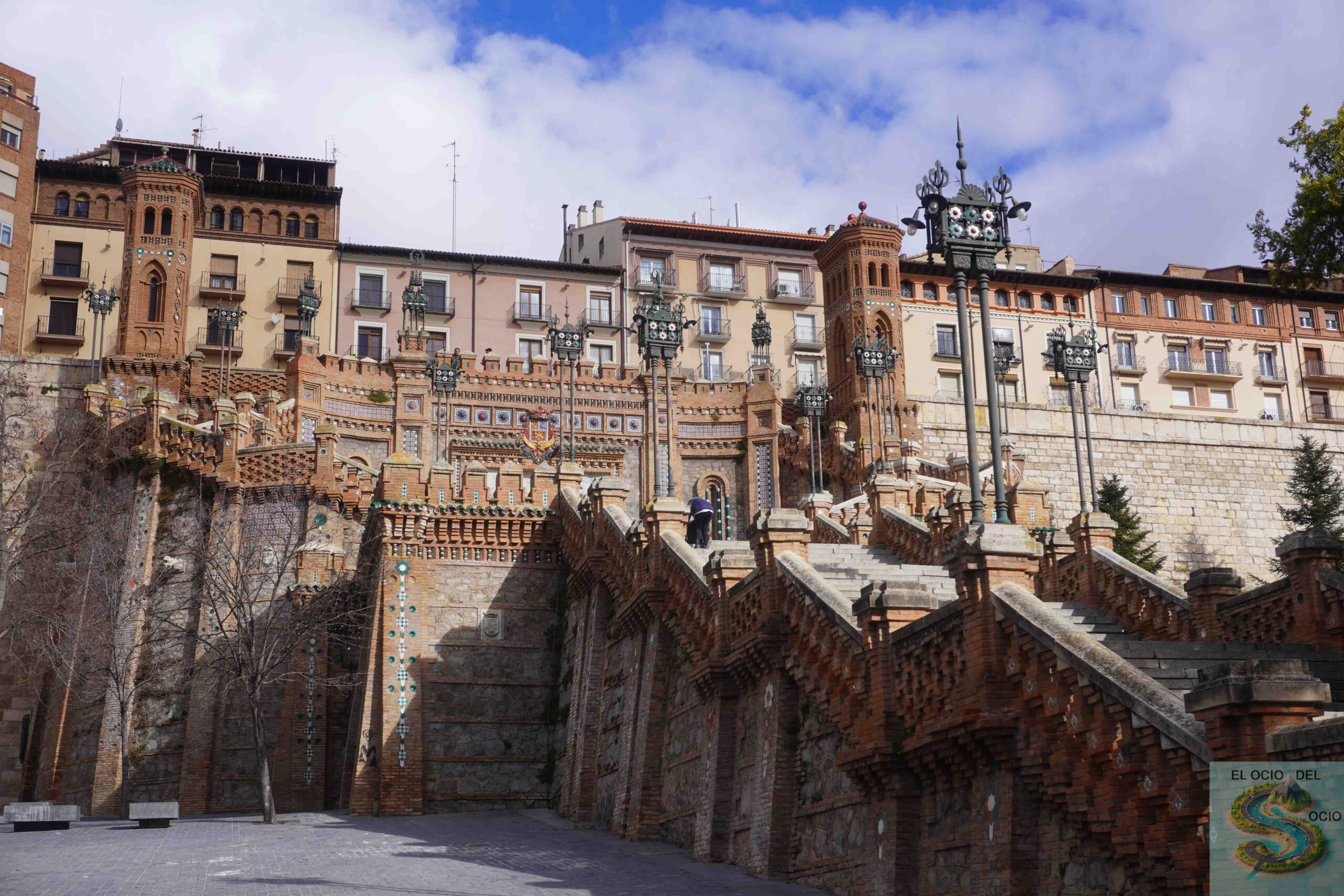
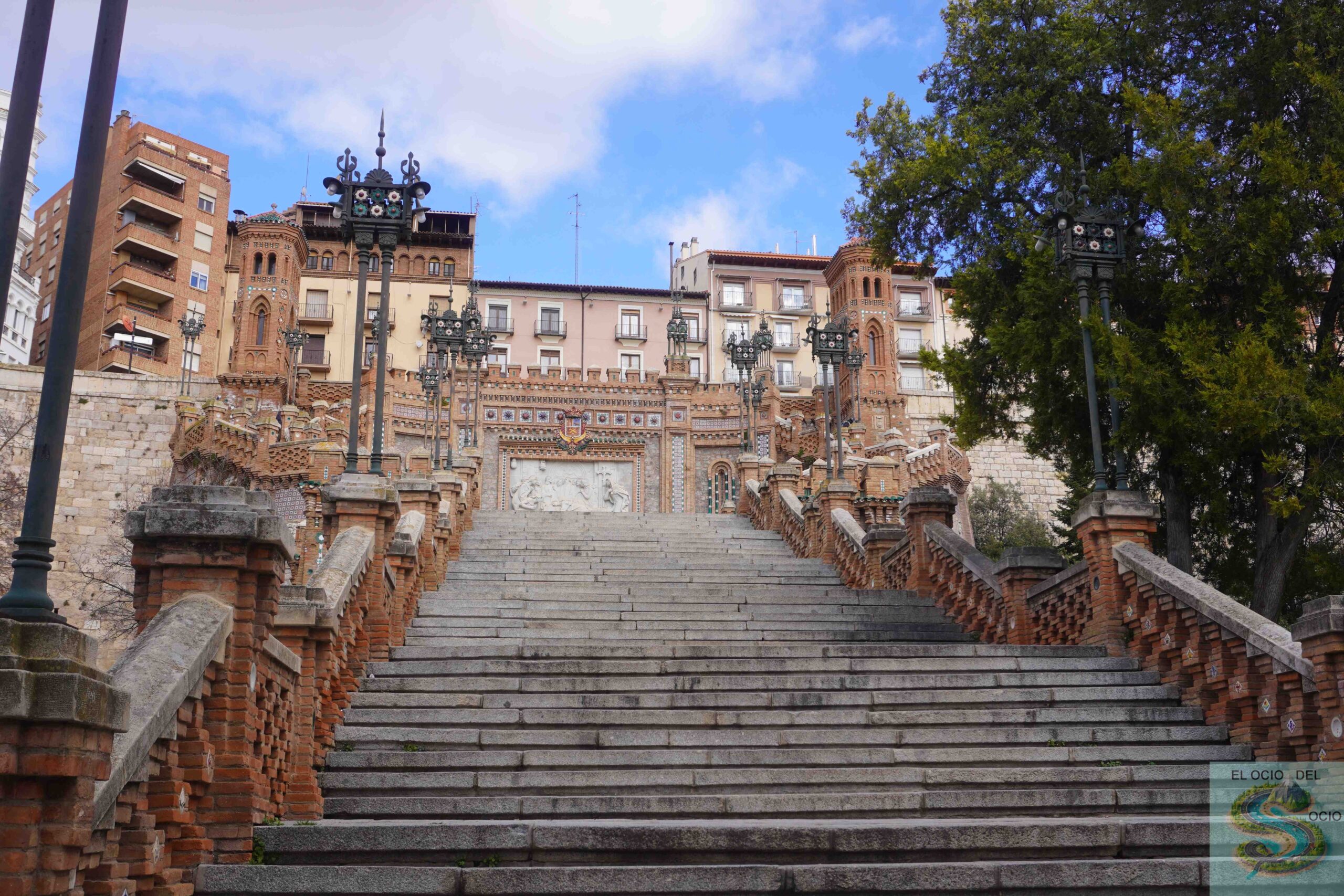
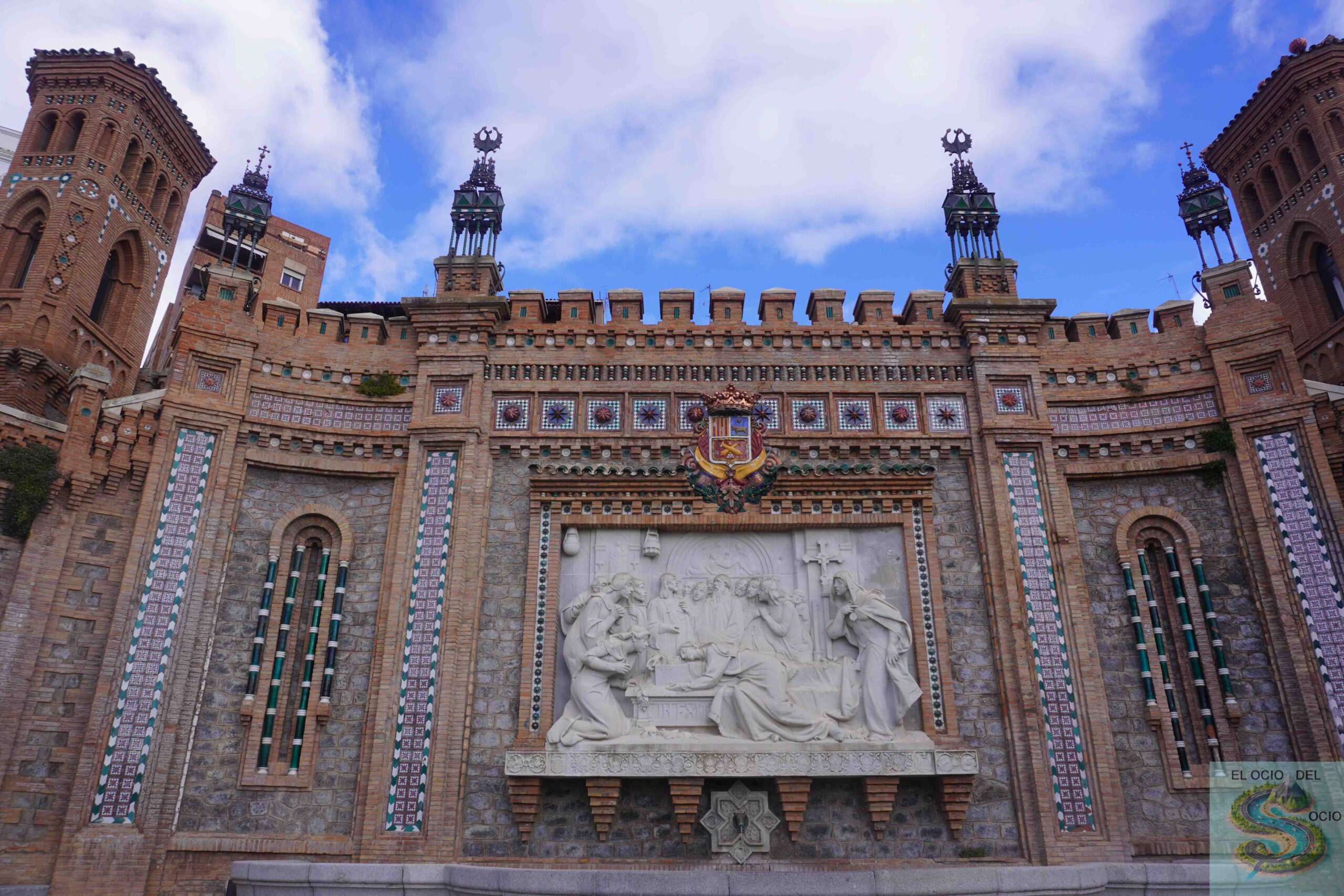
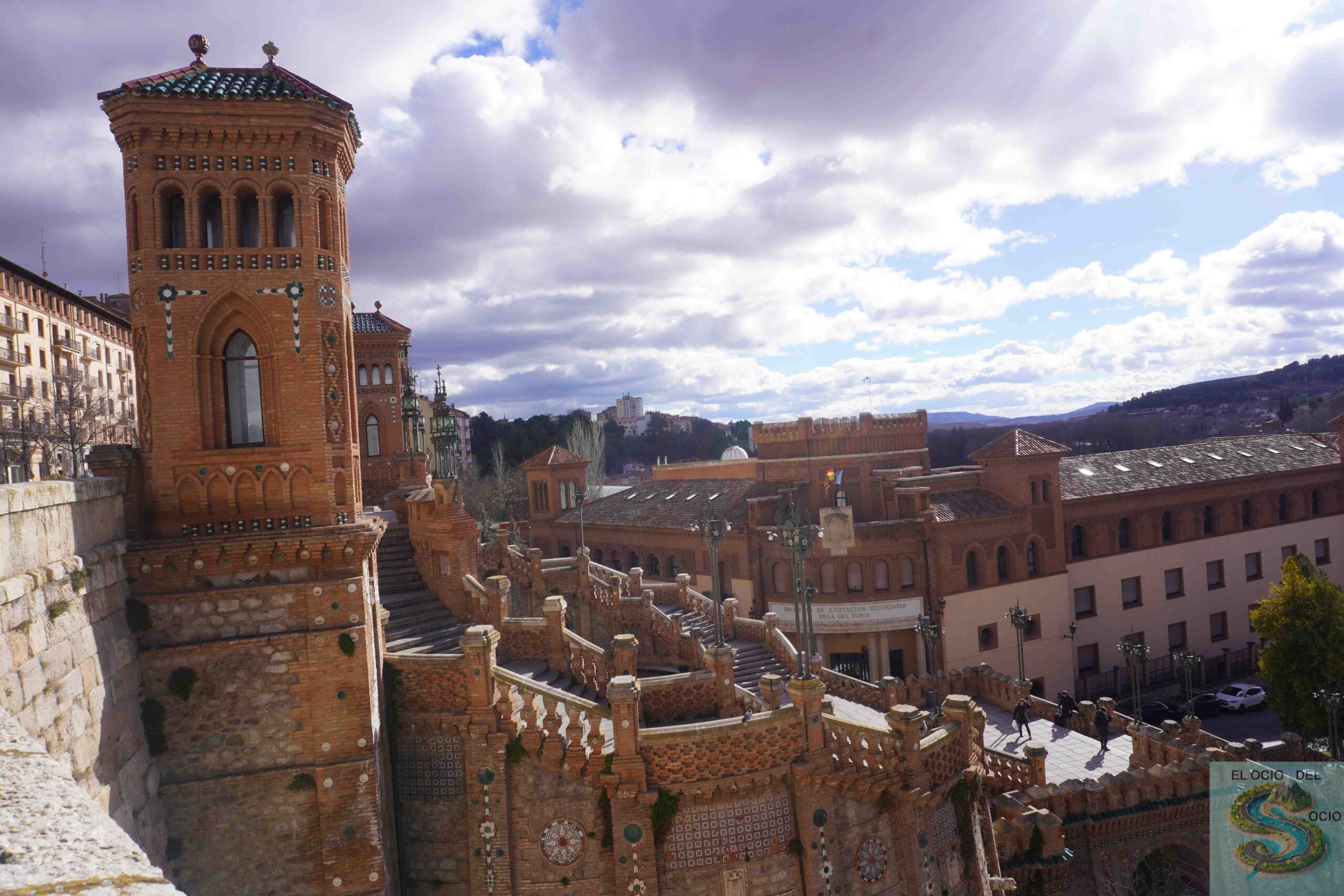
Note: for those who go with children or people who cannot climb the stairs, there is an elevator on a side.
In the Escalinata del Ovalo they honor the Mudéjar art, which is the most representative of this city. All the important constructions of Teruel present the geometric shapes characteristic of this style. Another representative example of this art is the Mudejar Tower of El Salvador, which is a few meters walking above the staircase.
- Tower of San Salvador
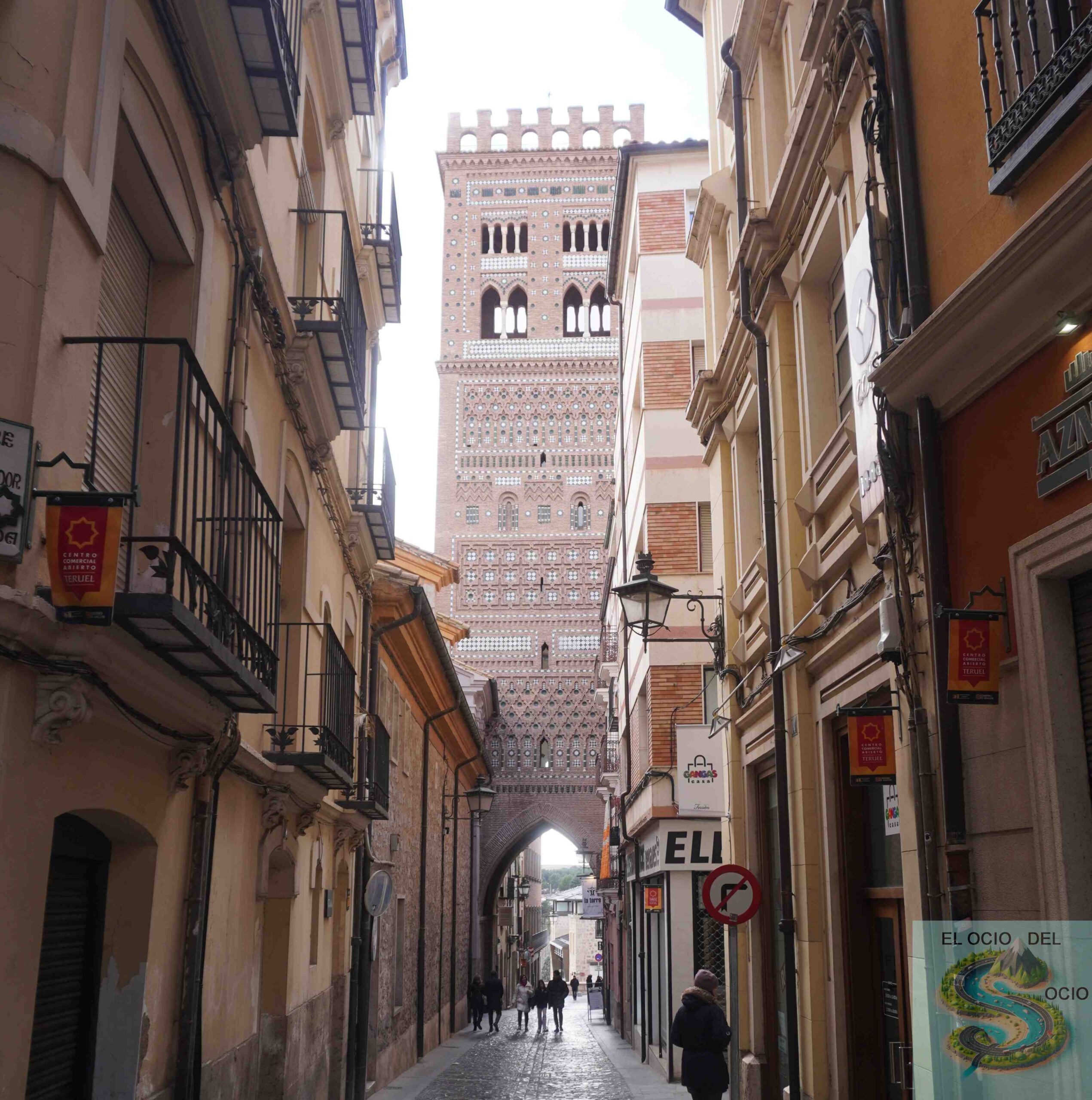
You can visit with schedule:
- Mañanas: 11: 00-14: 00
- Late: 16: 30-18: 30 (Monday afternoon closed)
Price: - Normal: 3 euros
- Reduced: 2 ’50 euros. Apply to:
- Children aged 7 to 17 years (under 7 years for free).
- Over 65
- Groups of more than 20 people
From the top of the tower you can enjoy the following view, from where you can see the Tower of San Martín:
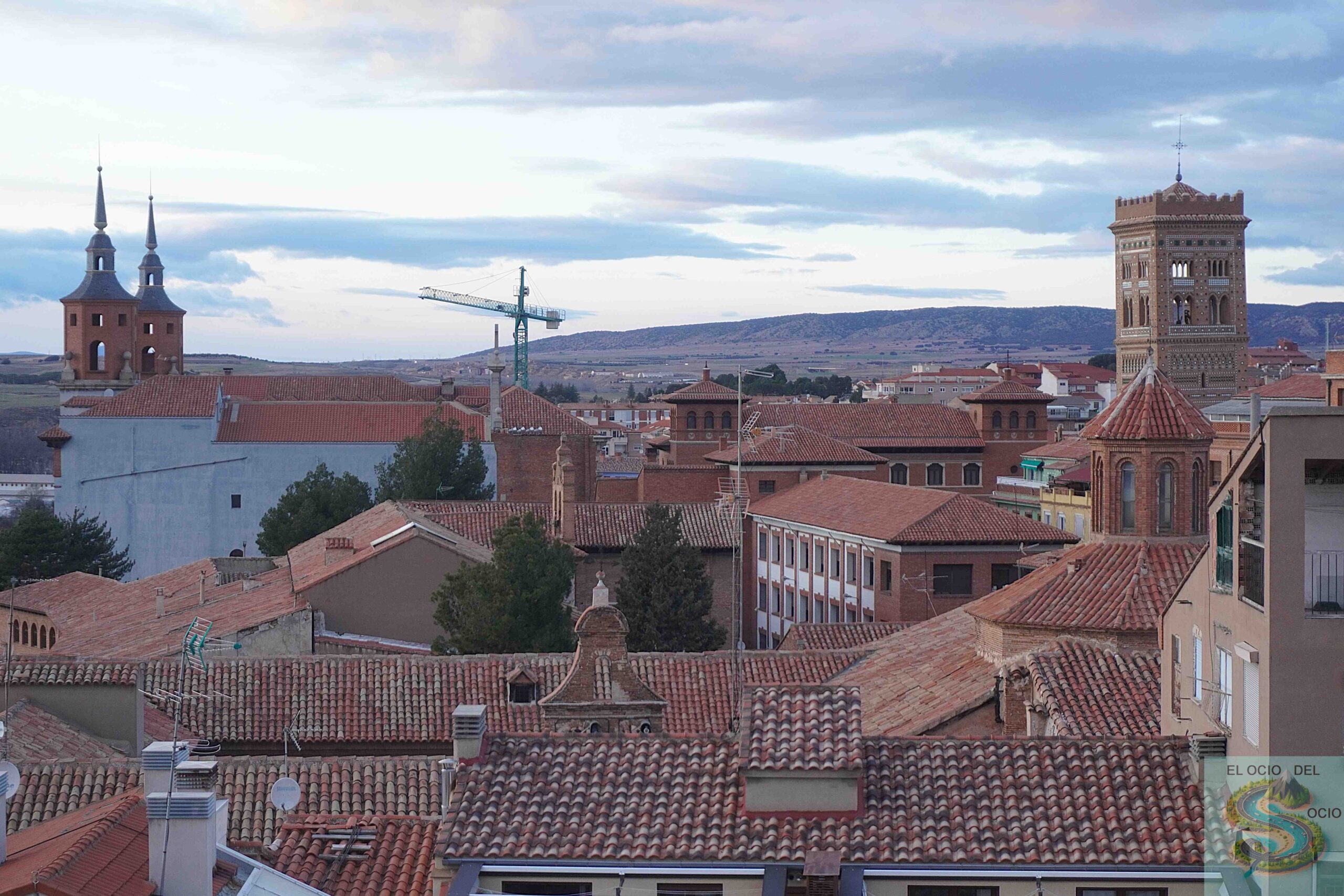
On the street parallel to that of the Mudejar Tower of El Salvador, going up the direction of the Torico square, we find a aljibe.
Hours:
11 a.m. to 2 p.m. and 5 p.m. to 7 p.m.
Prices:
Adults €1.30. Retired 1,00
Children aged 7 to 14 €1.00
Groups(Minimum 20 Pax) €1,00
Free admission to children under 7
- Aljibe
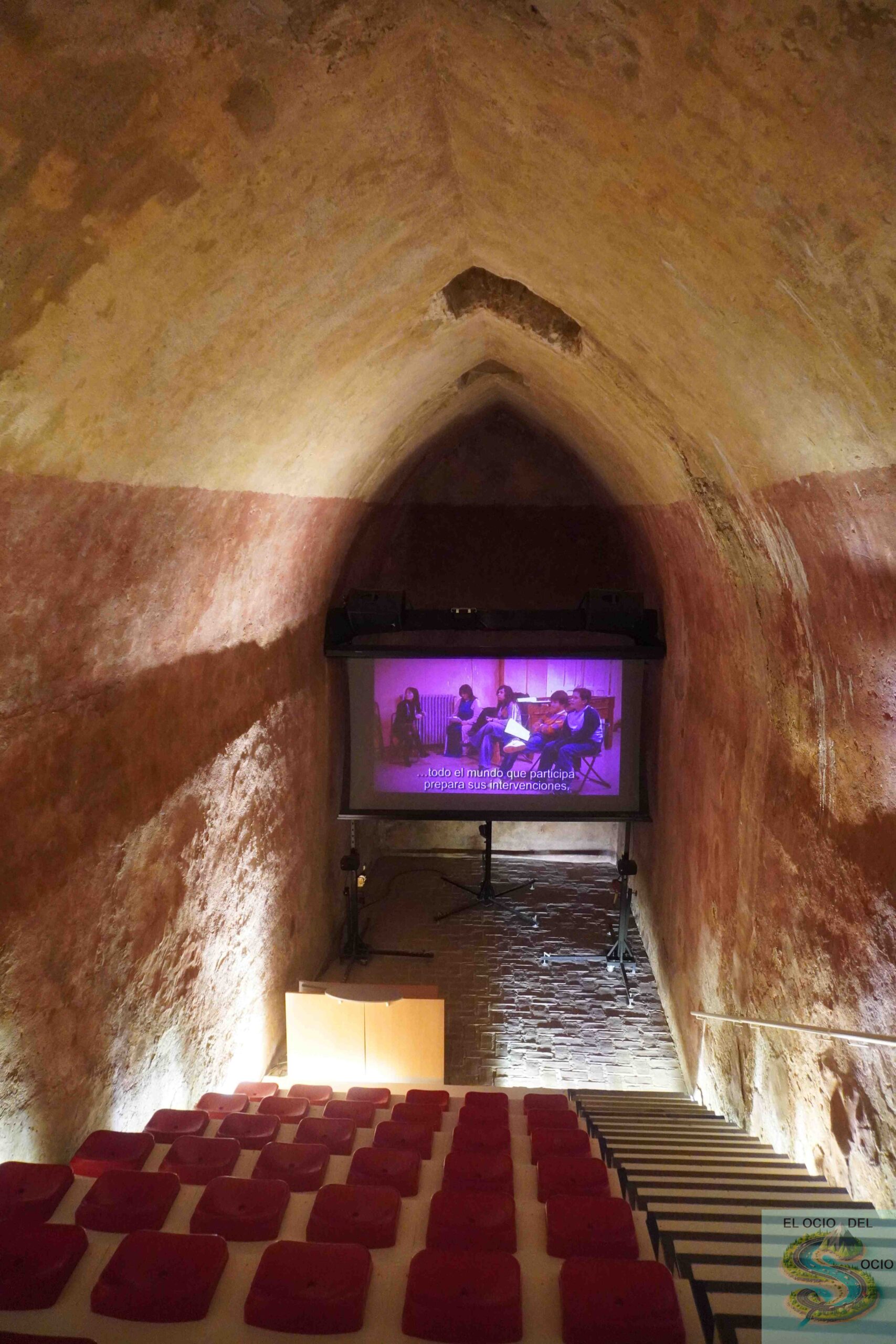
If we continue up the street from the Mudejar Tower of El Salvador or the street of the aljibe, we will find the Plaza del Torico later. The size of the Bull above the column located in the center of the square honors its name:
- Plaza del Torico
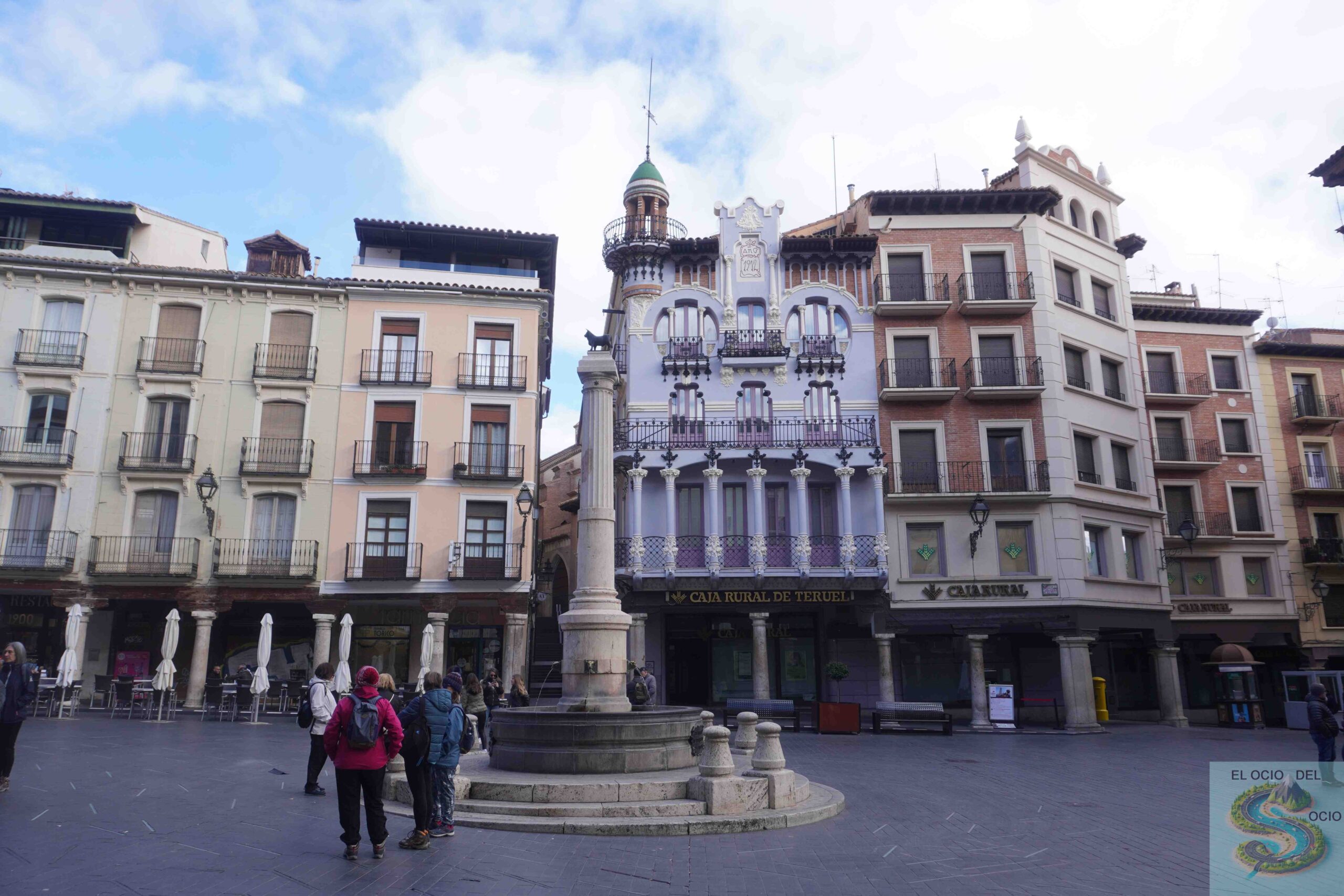
To the right of the Plaza del Torico, we find the Mausoleum of the Lovers, which is raised in honor of the lovers of Teruel. It is one of the most spectacular and recent constructions in the city and also wink to the Mudejar art of the whole city.
- Mausoleum of lovers
The lovers of Teruel is a Spanish legend that tells the story of two young people named Isabel de Segura and Diego de Marcilla, who belong to two different social classes. In the last section of this post I share the full story, for the moment we will focus on what you will see.
The outside of the Mausoleum again honors the Mudejar art: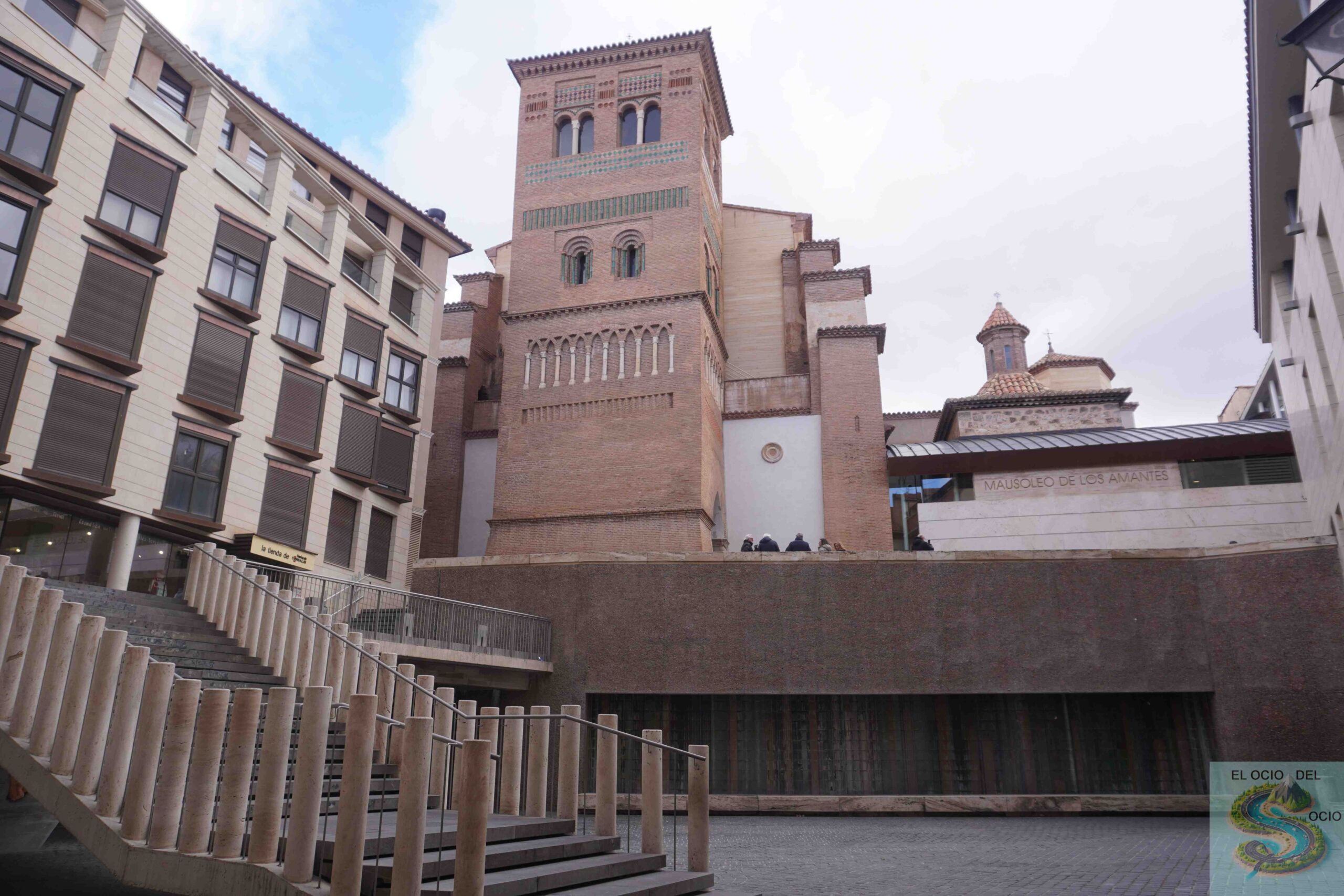
In addition, outside you will be able to take a picture with the statue of the lovers.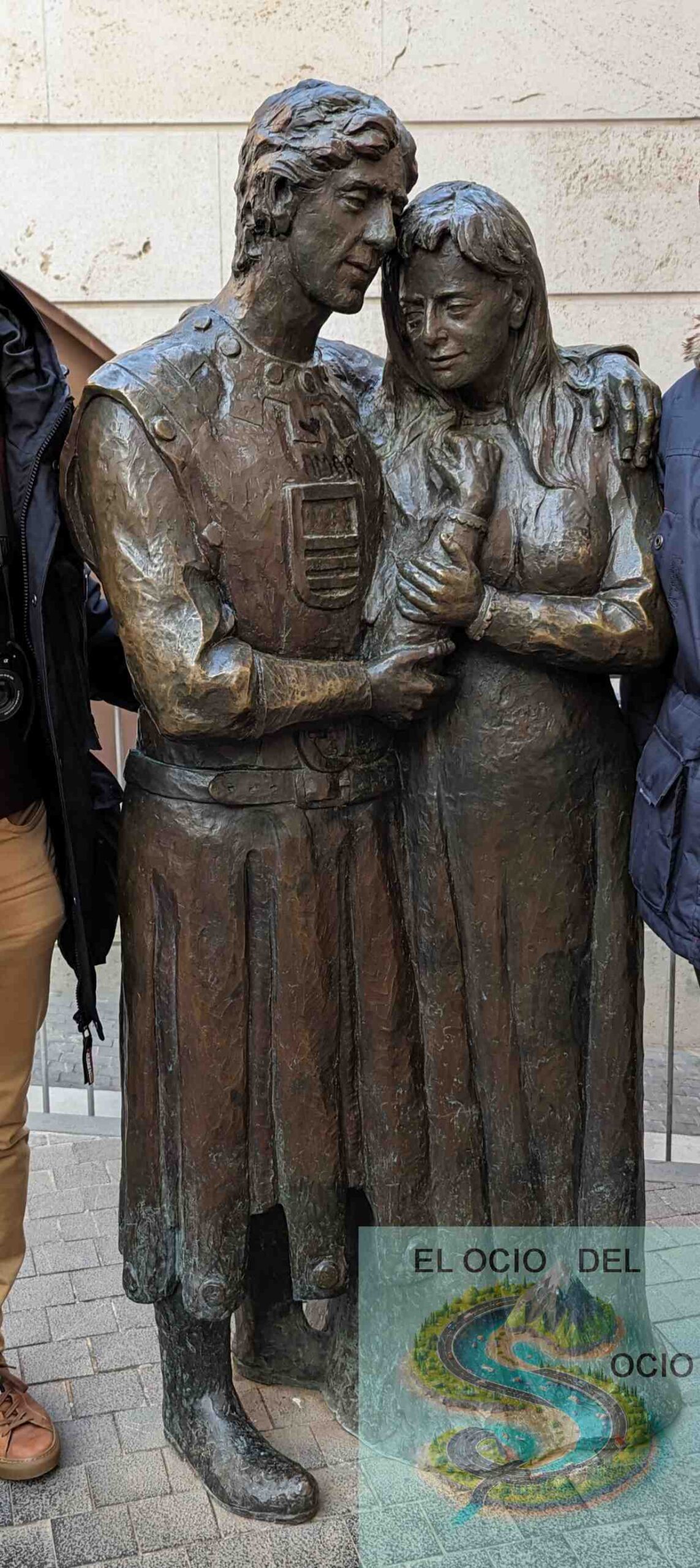
Inside, you can see representations of the “graves” of lovers holding hands:
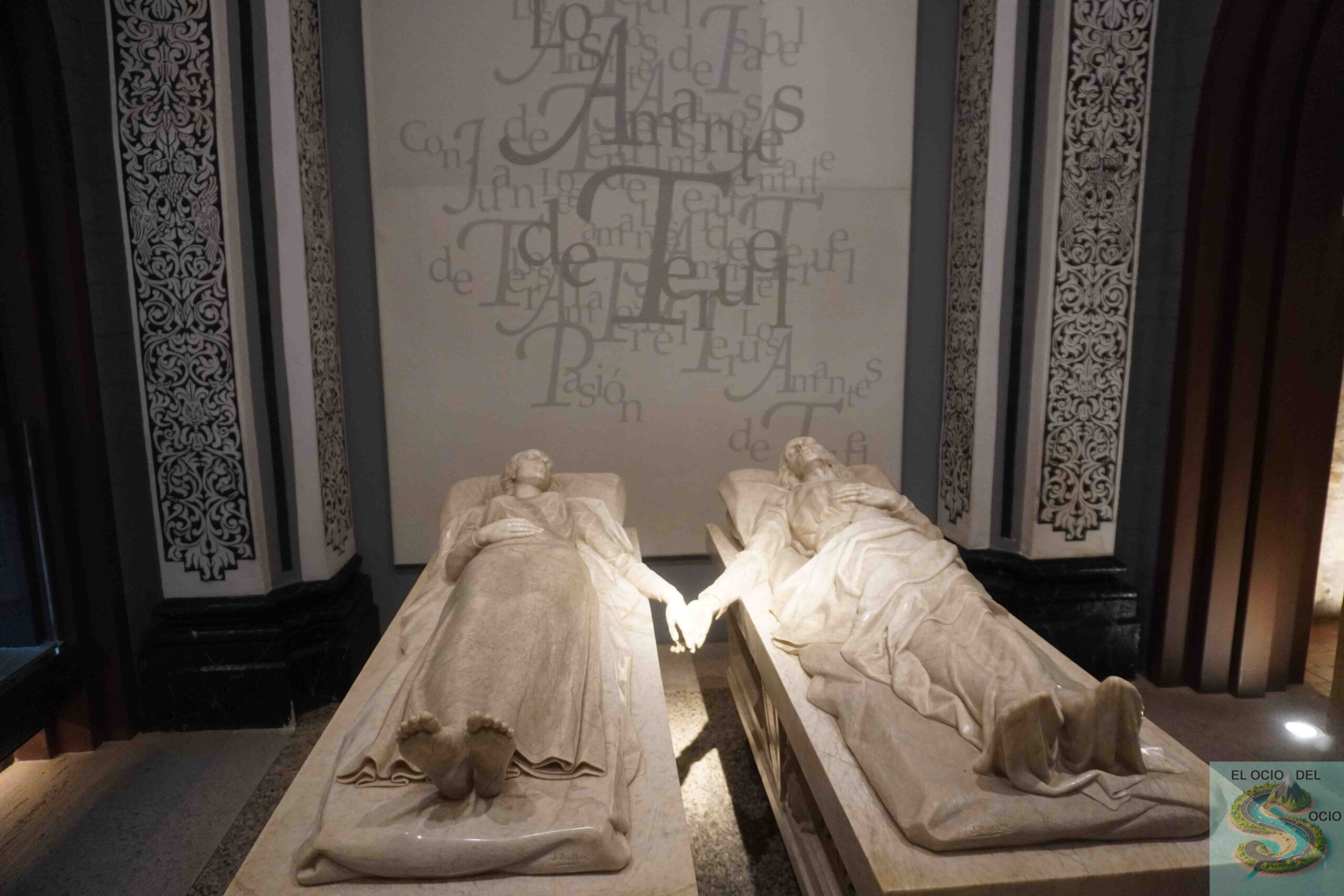
In front there’s a beautiful mural:
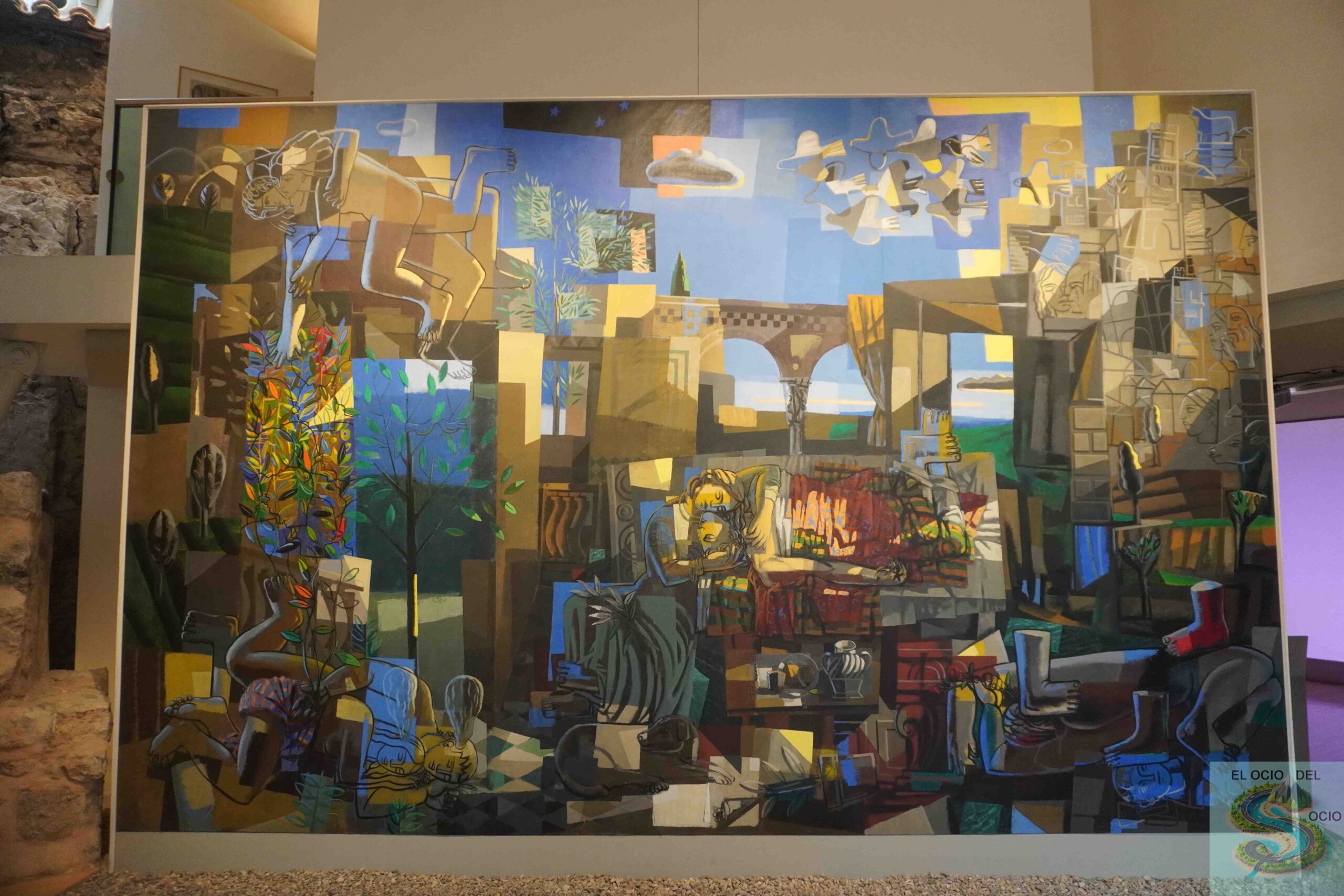
In addition, there is a church that has a beautiful roof, which seems to be made of constellations:
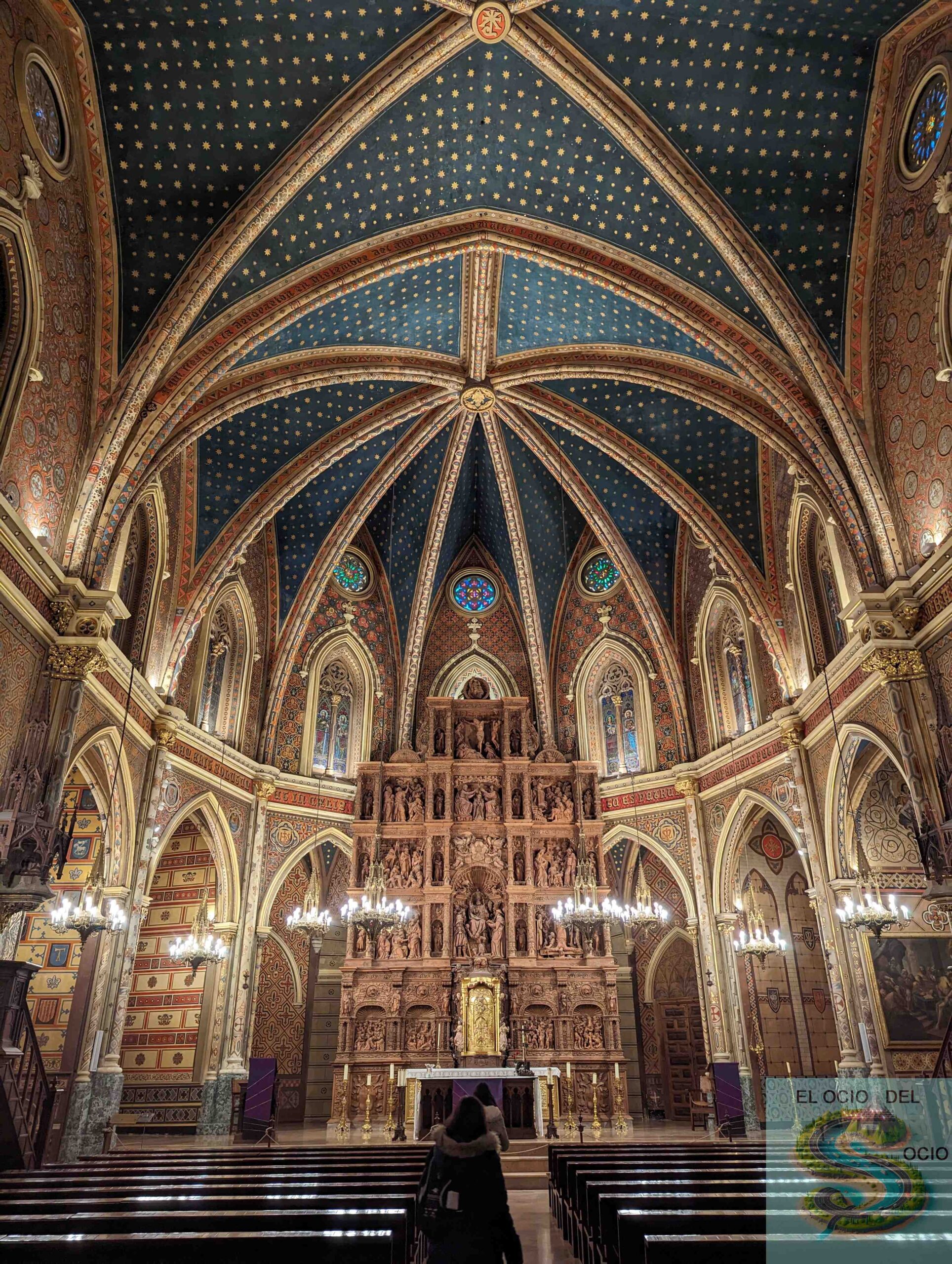
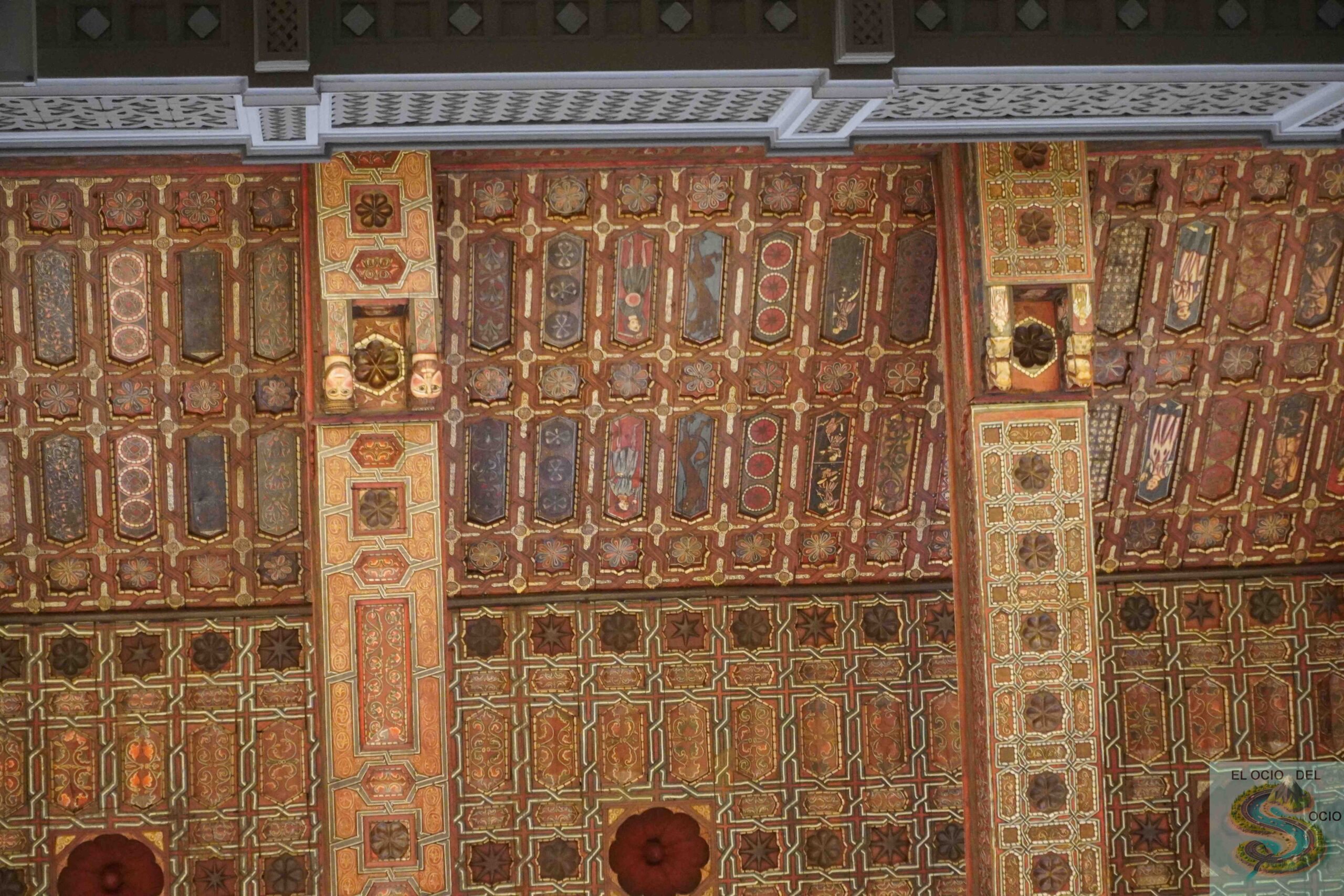
And, to finish the Mausoleum of the Lovers, very nice courtyards:
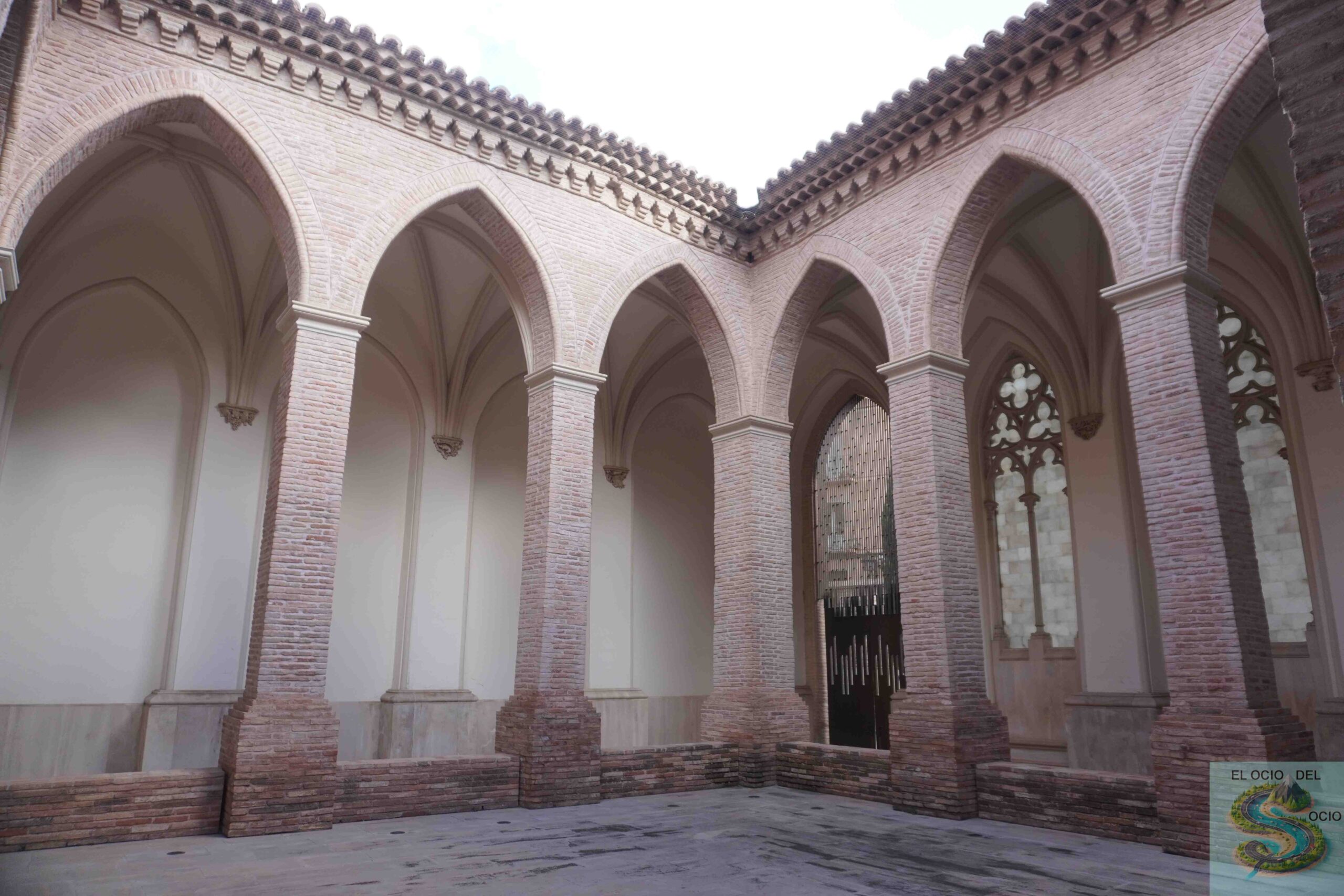
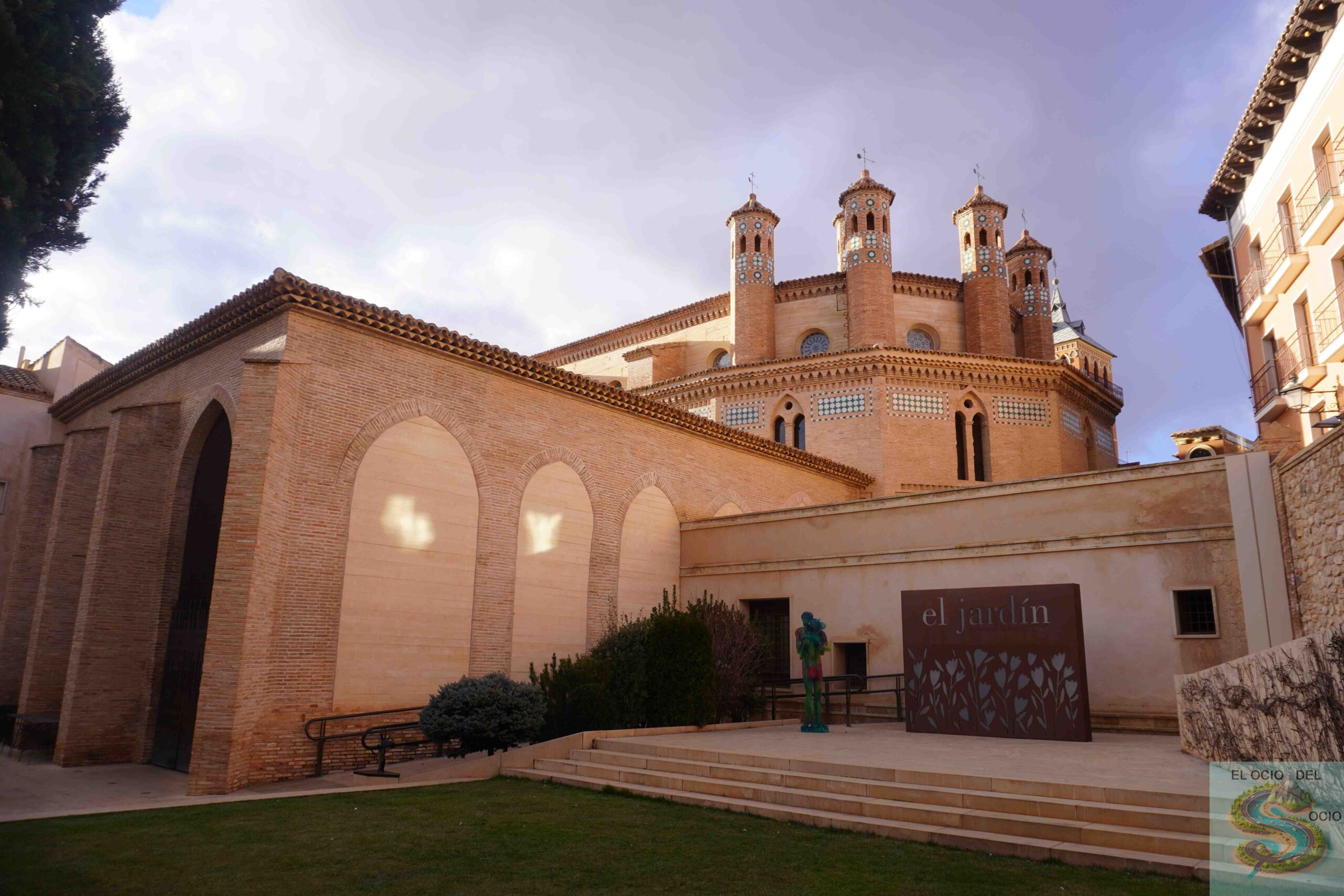
To the left of the Torico Square, we find the Cathedral of Santa María de Mediavilla de Teruel, which presents another Mudéjar Tower:
- Cathedral of Santa María de Mediavilla de Teruel:
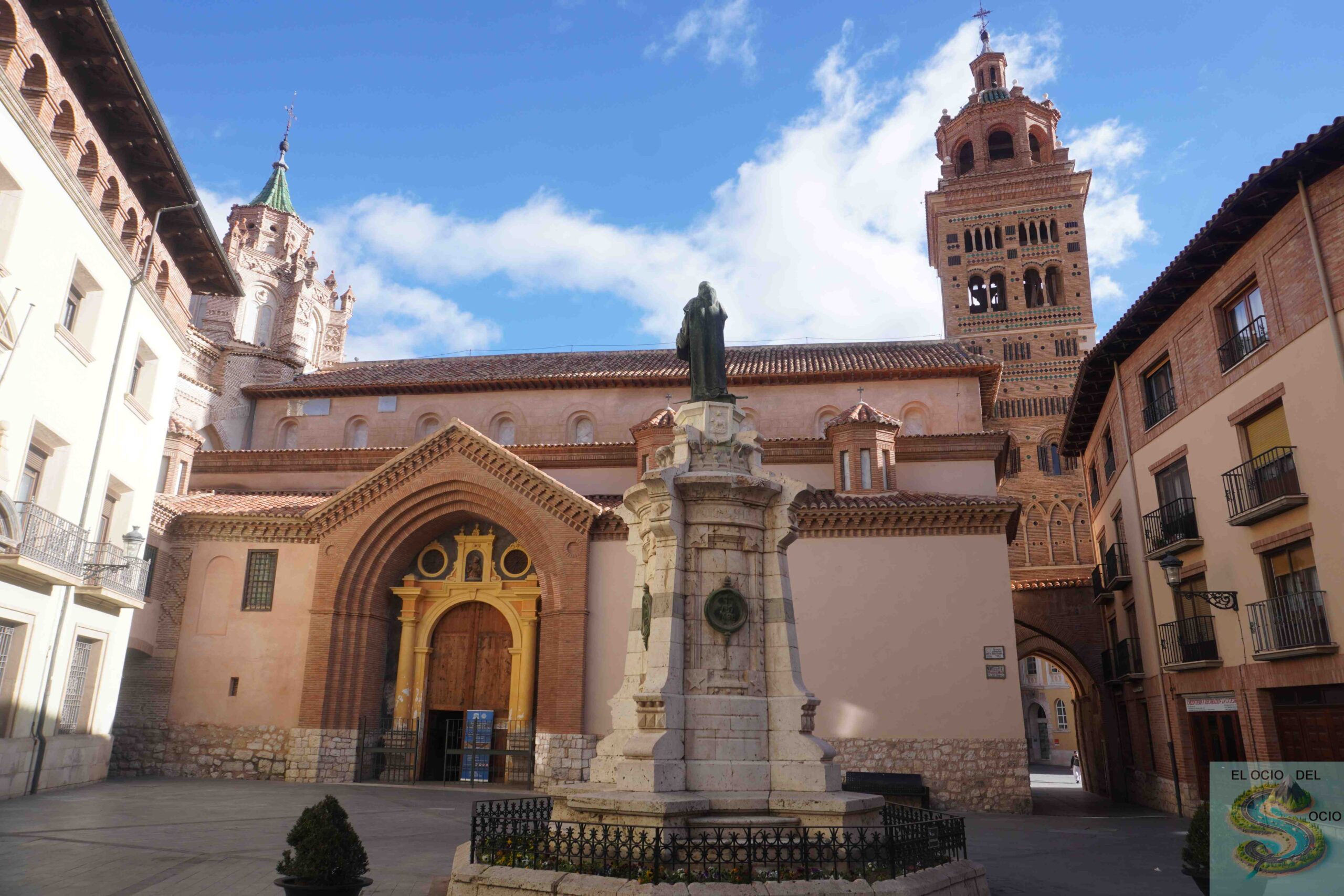
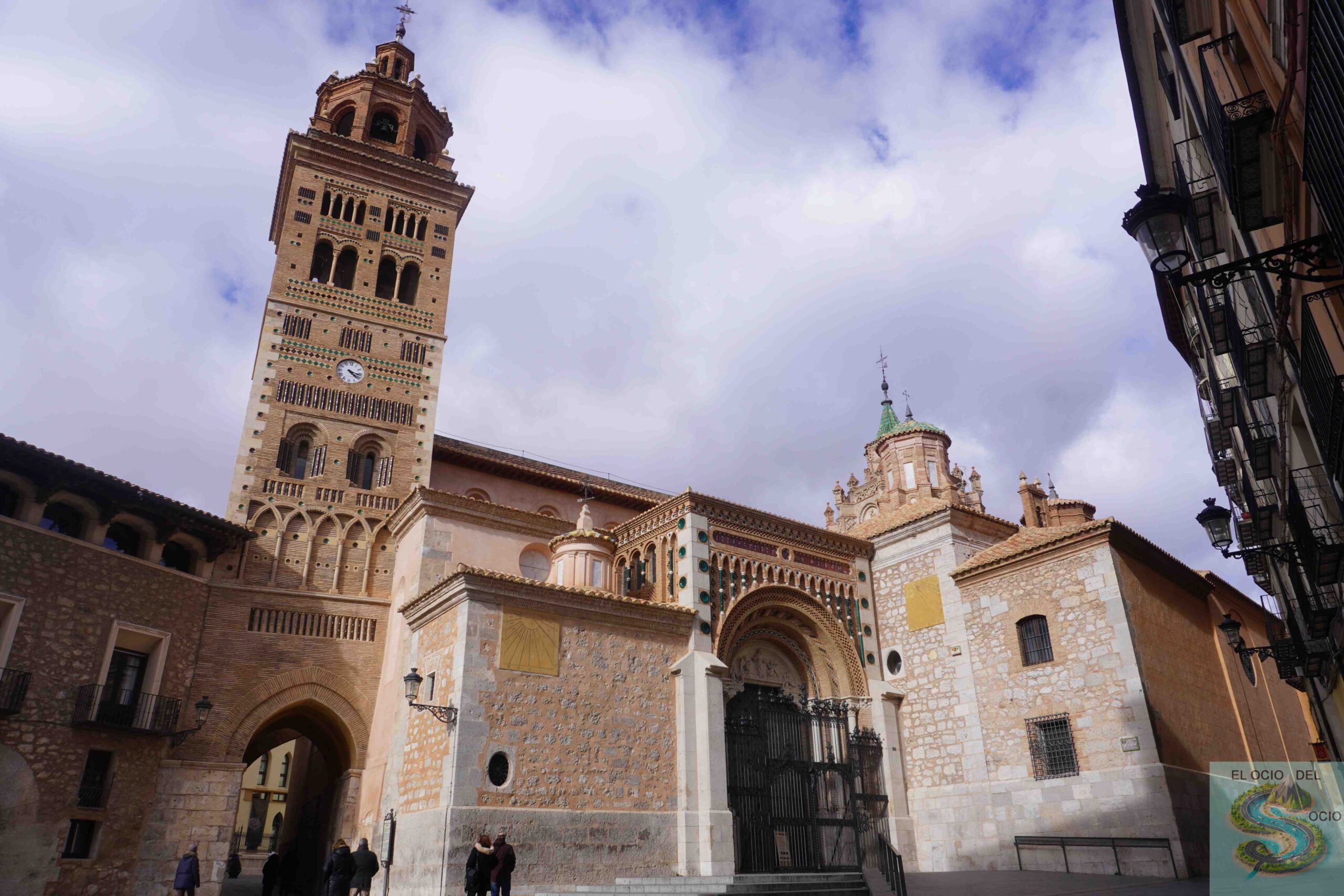
Up above in the city, there is the Teruel Museum, which is free of charge and, apart from the exhibitions you can see in there, we recommend to enter through the beautiful view of the rooftops of the city that you can see from there.
Time:
Tuesday to Friday from 10 a.m. to 2 p.m. and from 4 p.m. to 7 p.m.
Saturdays and Sundays from 10.00 to 14.00. Festivals from 10 a.m. to 2 p.m. and from 4 p.m. to 7 p.m.
Monday’s closed.Nearby is the Tower of San Martín, we do not visit it but we have located it on the map.
- Teruel Museum
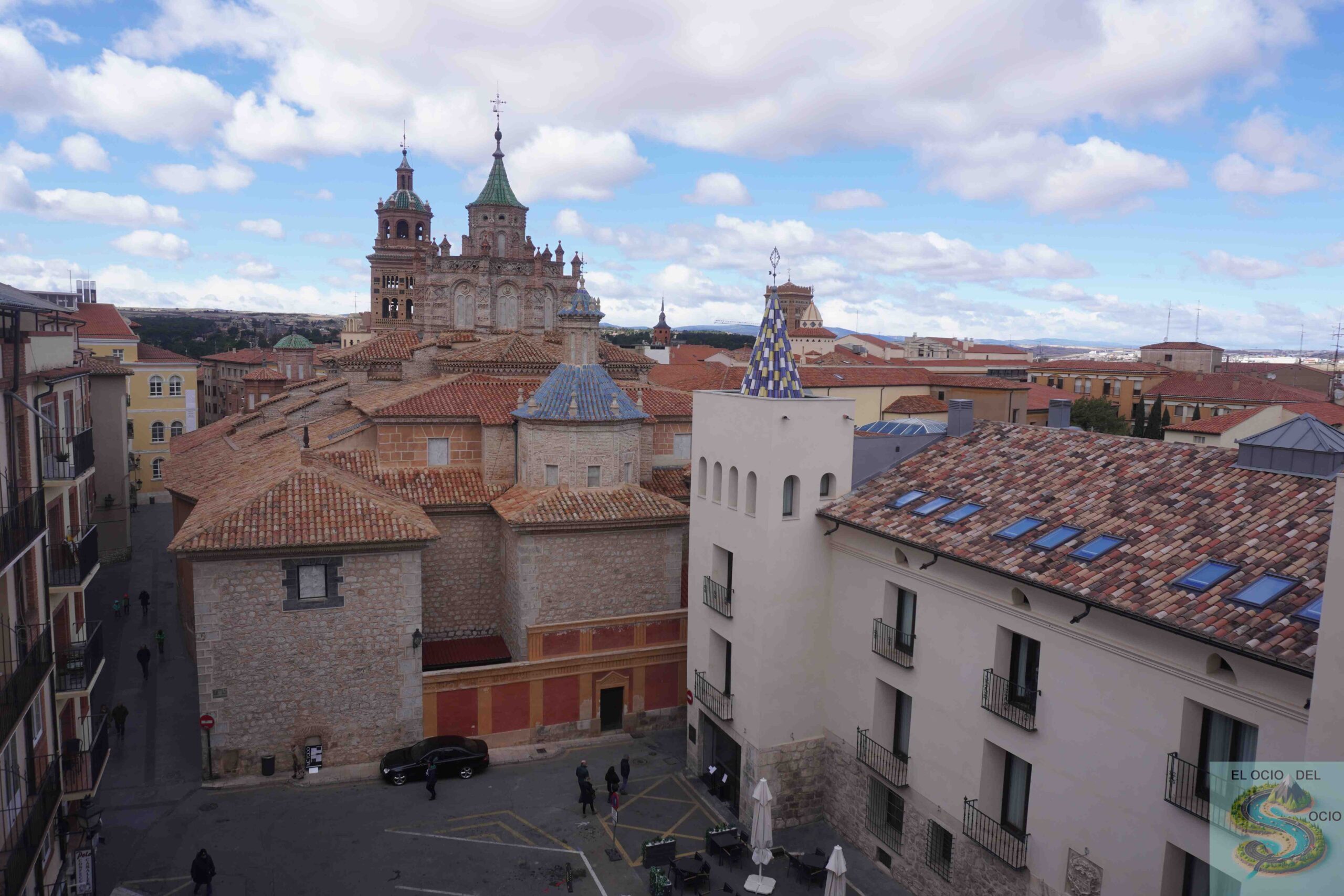
In conclusion, up above the Teruel museum, there is the wall, which can also be accessed and from which we can see these views:
- Teruel wall
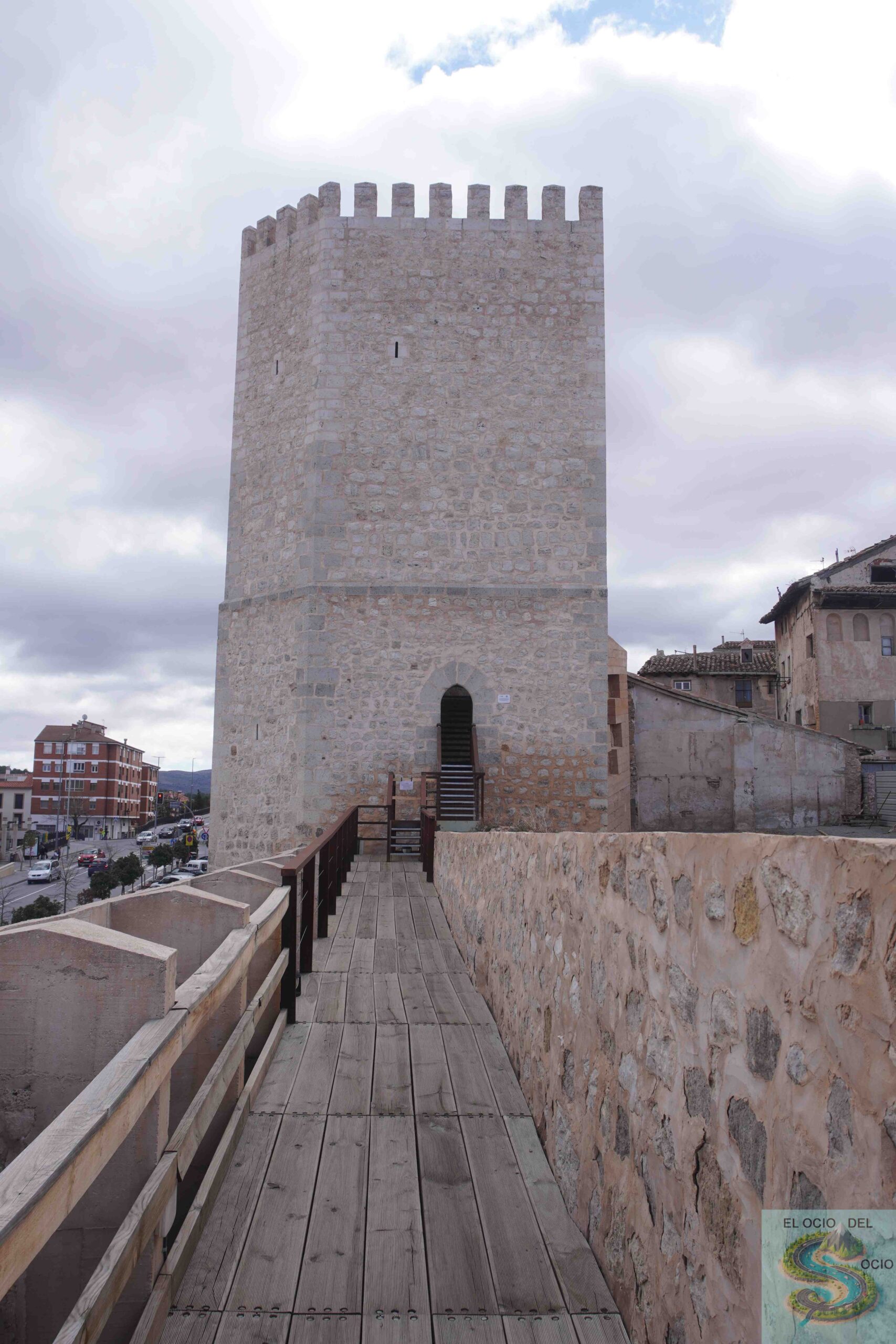
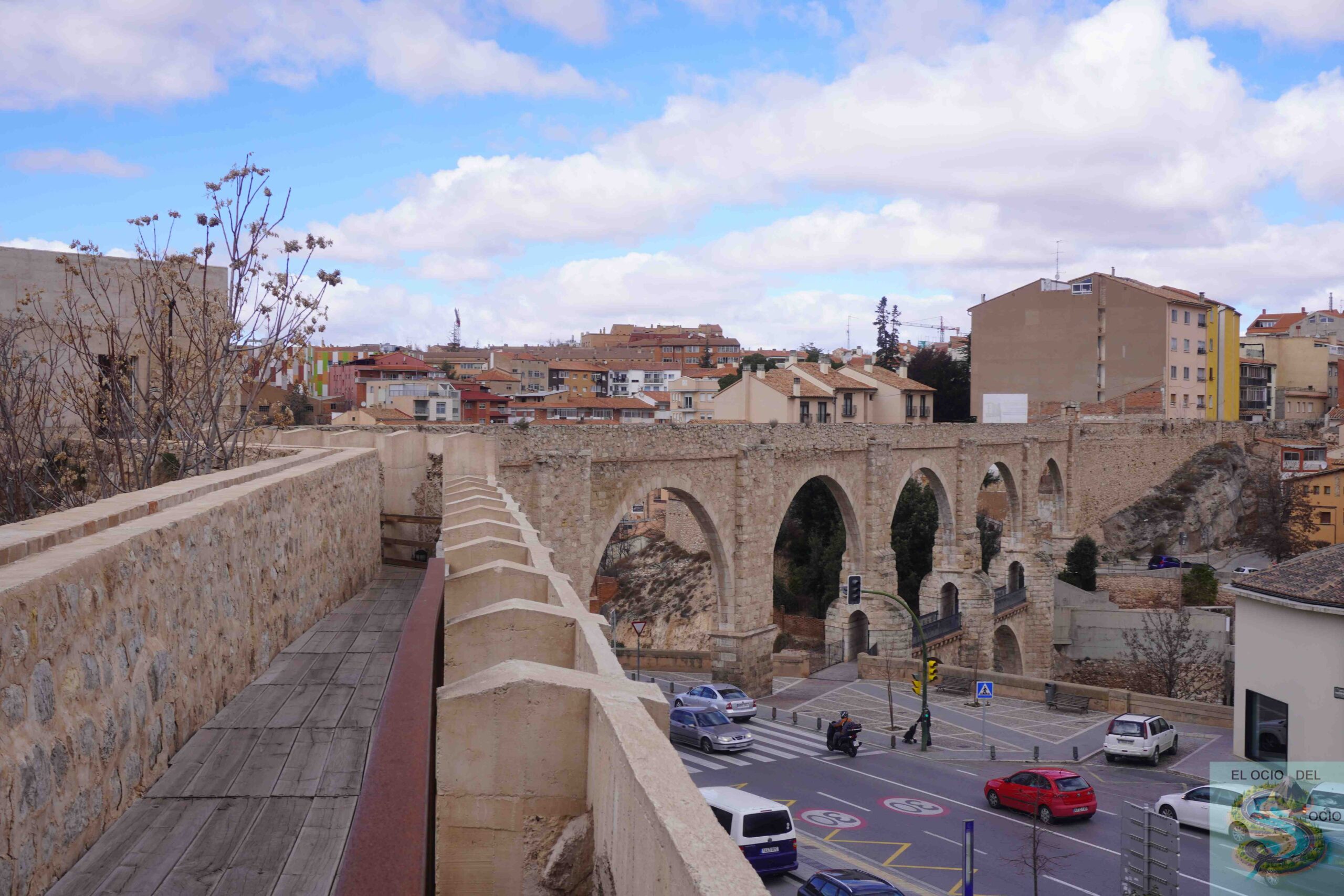
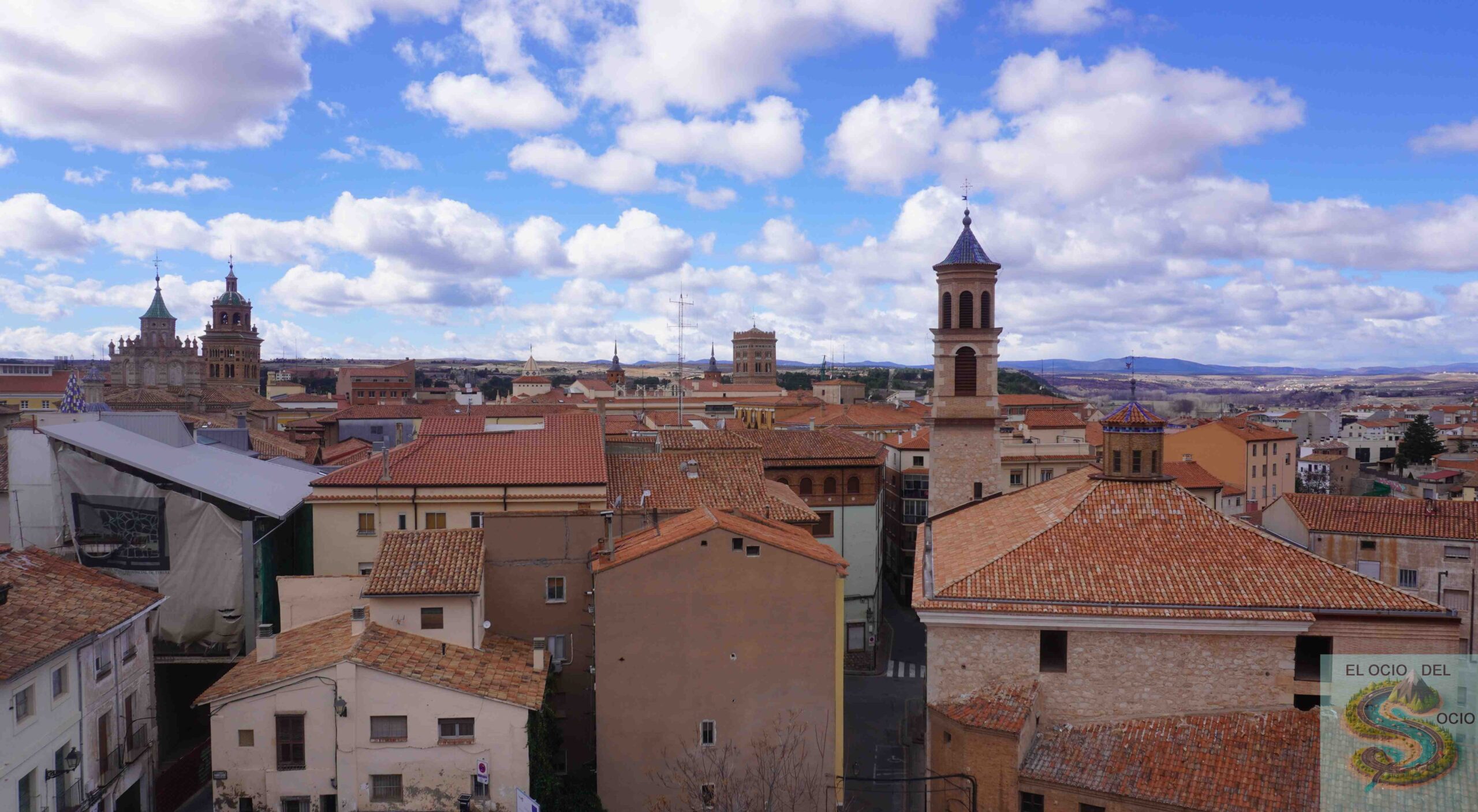
To finish the tour, I recommend eating or dinner at Hostal Alcazaba. I don’t promote it, but we stayed there and inside had an old aesthetic that we liked a lot.
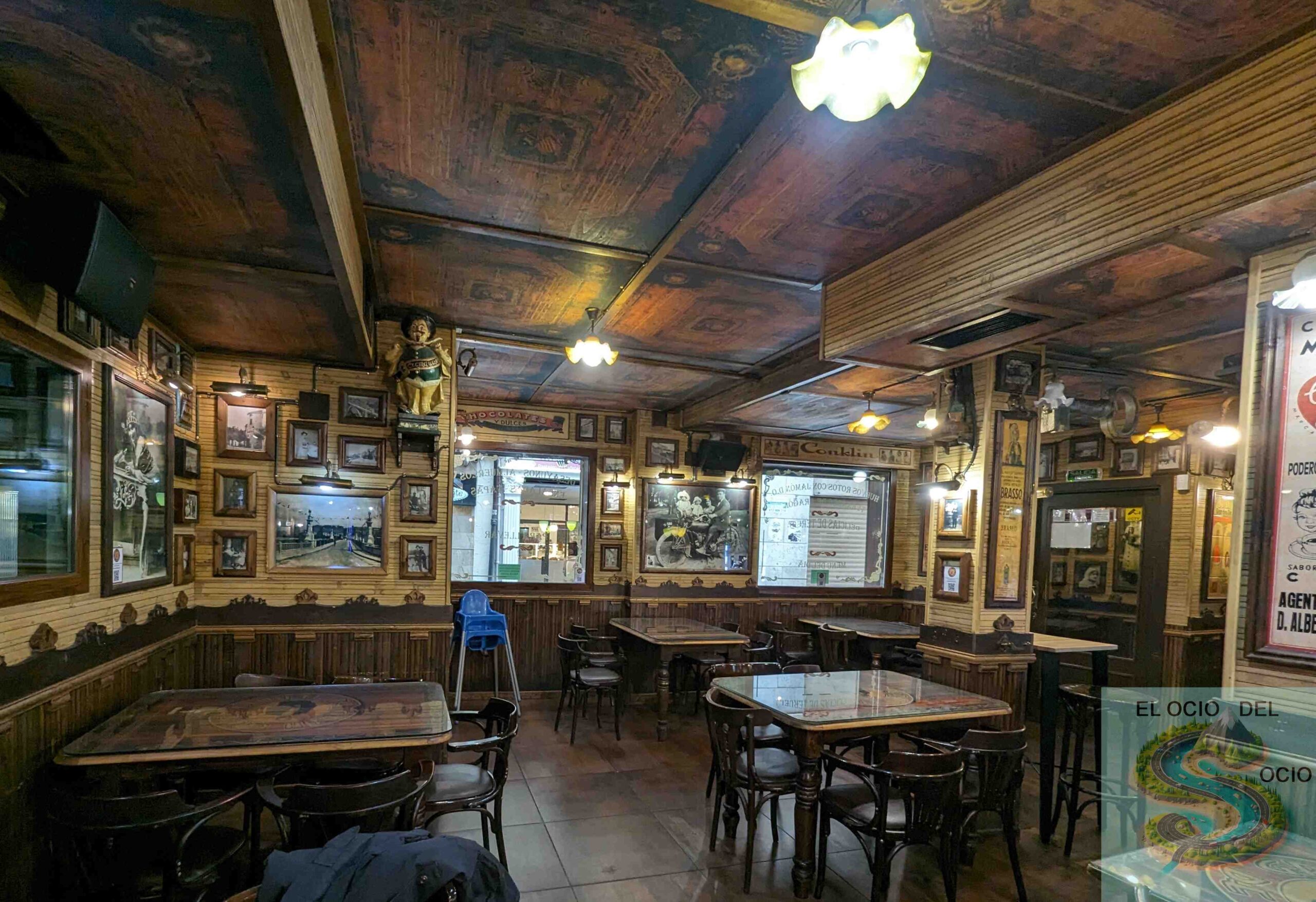
Map
Food
In Teruel, the most typical product is tenderness. They also have ham with a protected designation of origin (PDO), an olive oil with a designation of origin and the peach of Calanda, which is also a protected designation of origin.
If you go to a restaurant on the weekend, I would recommend booking in advance because it was difficult for us to find room and we could not try the meals I mentioned.
What we did try were some typical sweets that are sold in a pastry shop in Plaza del Torico.
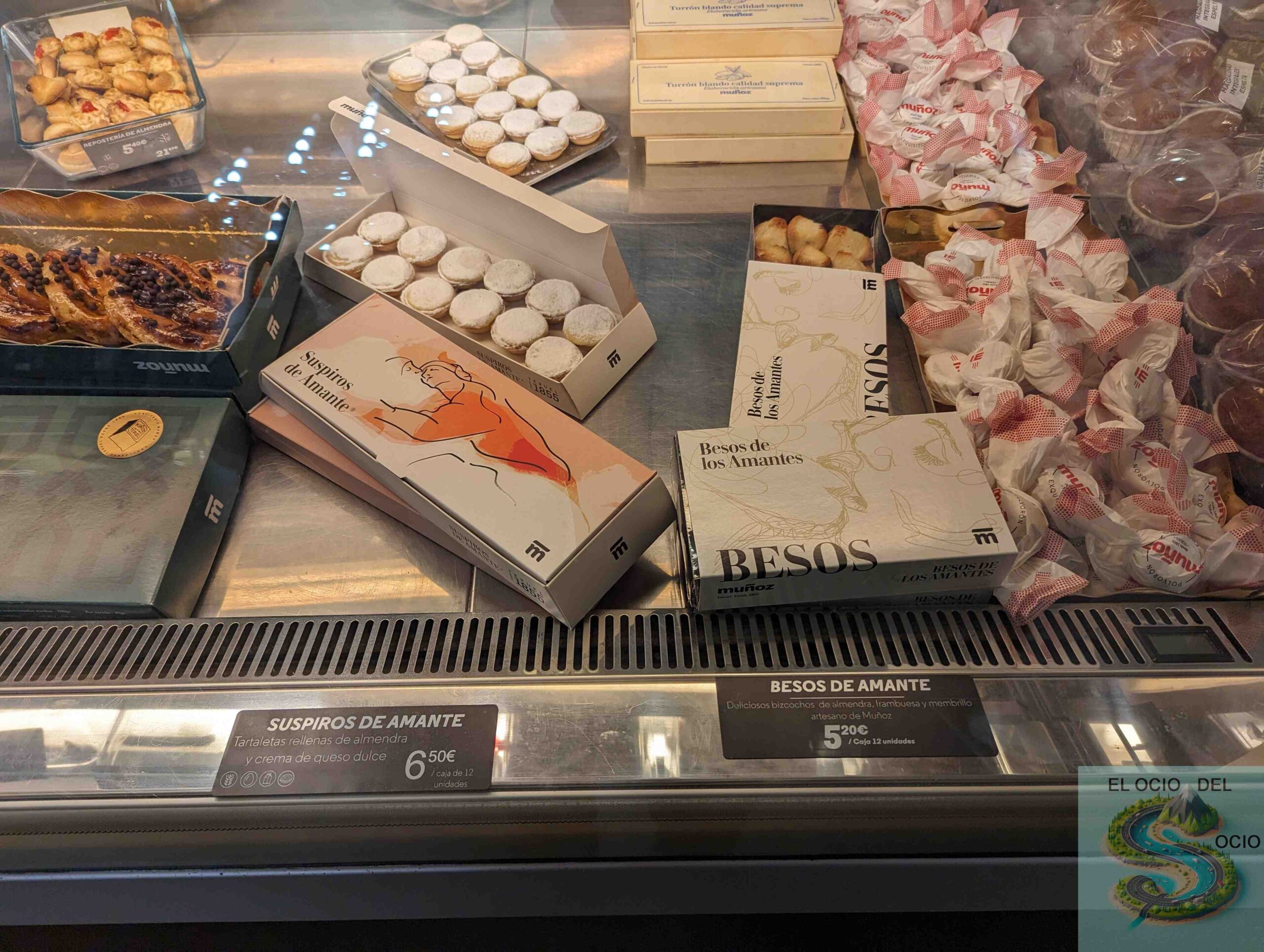
Legends of Teruel
The lovers of Teruel
The history of the Lovers of Teruel is one of the most famous and tragic legends of love in Spain, worthy of being told over the centuries. Here I tell you:
In the 13th century, two young people named Isabel de Segura and Diego de Marcilla lived in Teruel. They met from children and fell in love, but their love had an obstacle: the difference in social classes. Diego came from a humble family, while Isabel was from a wealthy family.
Isabel’s father did not see union with good eyes because of Diego’s lack of wealth. However, Diego asked his beloved to wait for him for five years, promising him that he would become rich and could ask for his hand in marriage. Isabel accepted and promised to wait.
Diego left in search of fortune and, after many adventures, managed to accumulate enough wealth to marry Isabel. But on returning to Teruel after the age of five, he discovered that his beloved had been forced to marry another man, because his father could no longer wait.
Desperate, Diego asked Isabel for a last kiss, but she, faithful to her husband, denied it. In the face of the refusal, Diego was unable to bear the penalty and died there at Isabel’s feet. Impaired by the death of his true love, Isabel broke her marriage fidelity, kissed Diego and died next to him.
The two building lovers of Teruel
This legend is also known as the history of theSan MartínandEl Salvador.
In the city of Teruel, it is said that during the construction of the two Mudejar towers, there was a great rivalry between two building teachers. They were both very talented and wanted to prove who the best craftsman was. The king ordered them to build two towers at the same time: one by the church of Saint Martin and the other by the church of El Salvador.
The two builders, whose identities have been lost in time, made every effort to create the most impressive towers that would have ever been seen. The rivalry between them was such that each day, from their respective towers, they observed each other to see the advances and try to overcome themselves.
Over time, the two towers began to rise majestically, each with unique details and unparalleled beauty. People in the village admired the dedication and talent of the two teachers, commenting on the high quality of both towers.
Finally, the day came when both builders completed their works. The king, impressed by the beauty and mastery of the two towers, decided not to proclaim a winner, as both were magnificent in their style and detail. Thus, the towers of San Martín and El Salvador were raised as a symbol of rivalry and excellence in the Mudejar architecture of Teruel.

